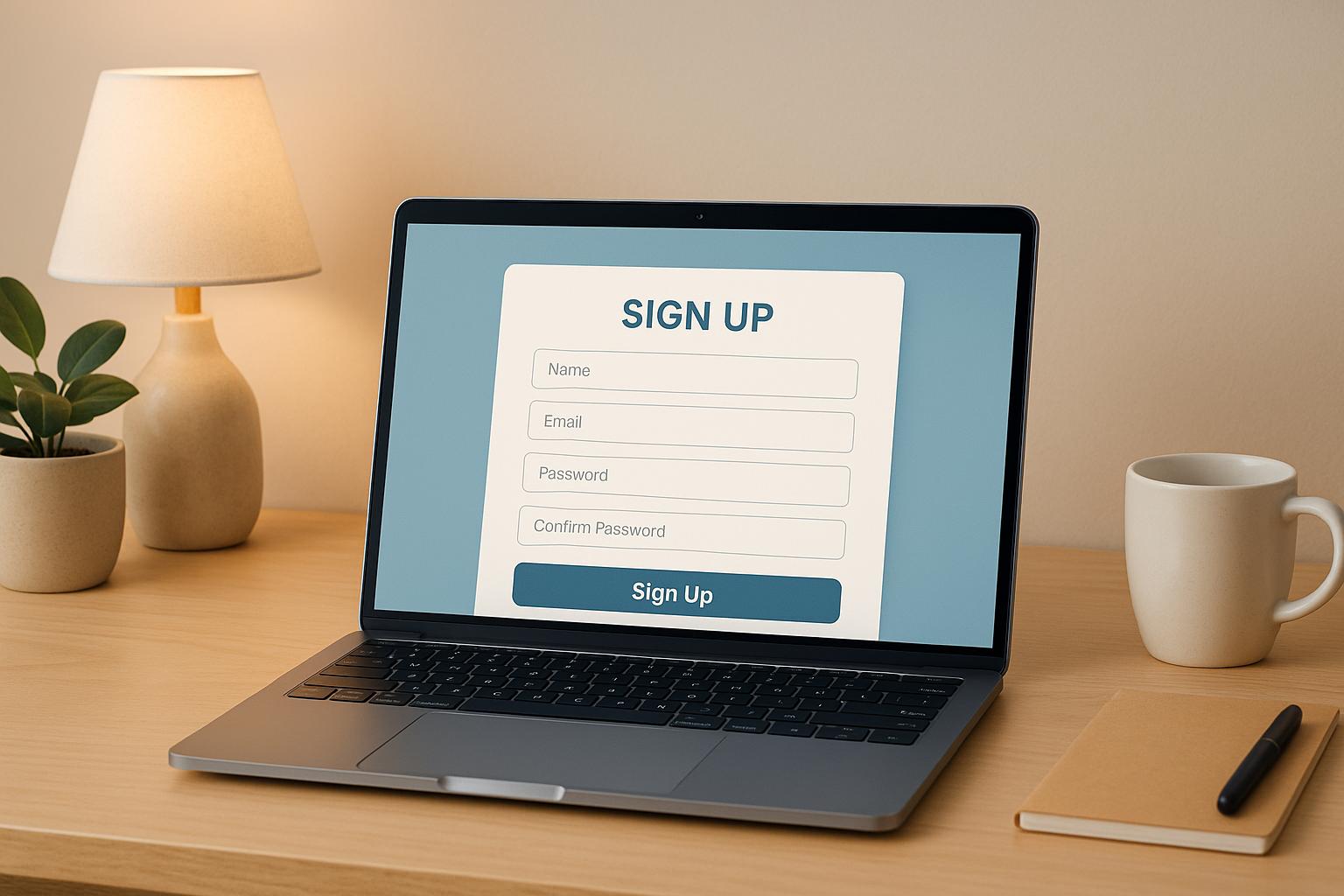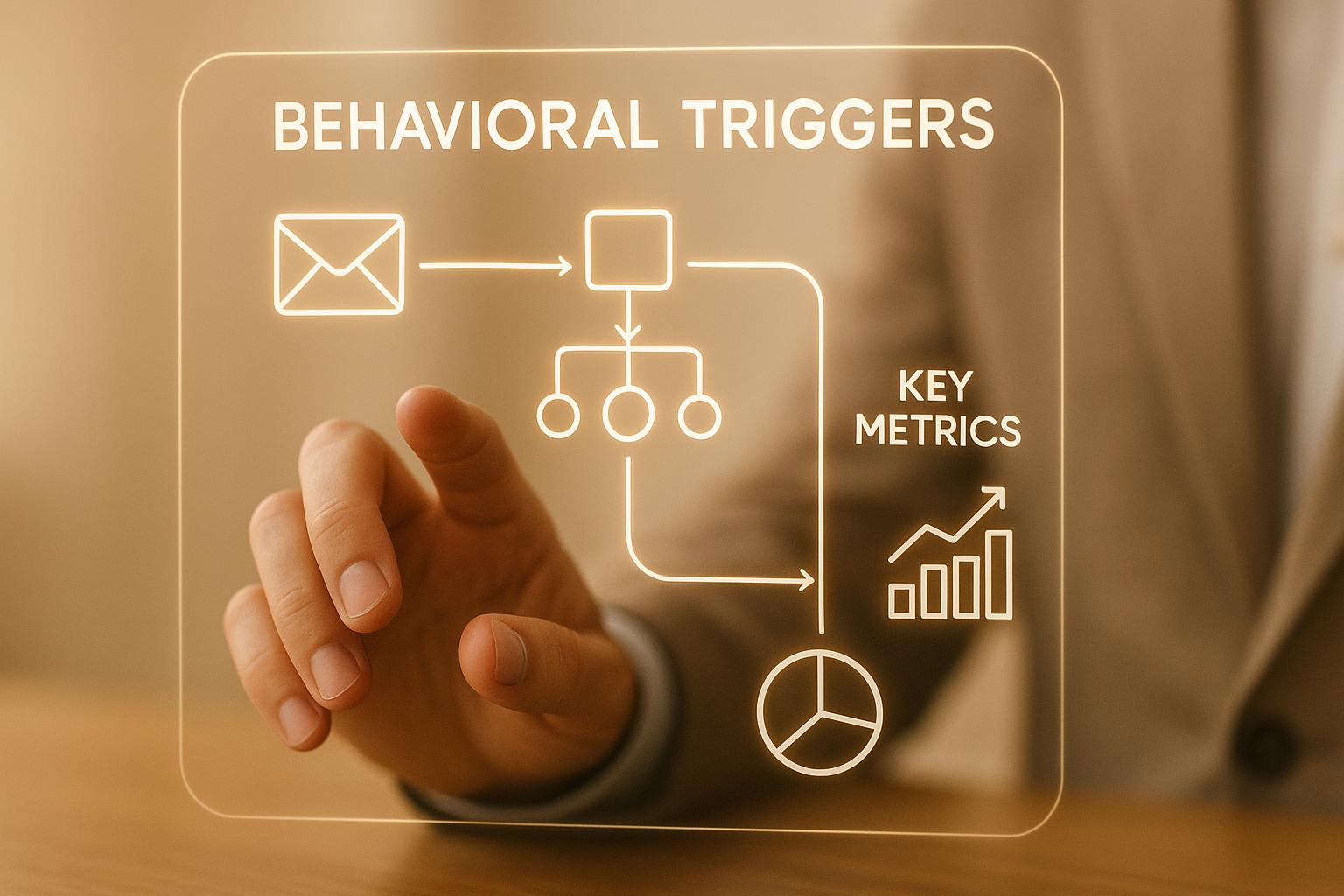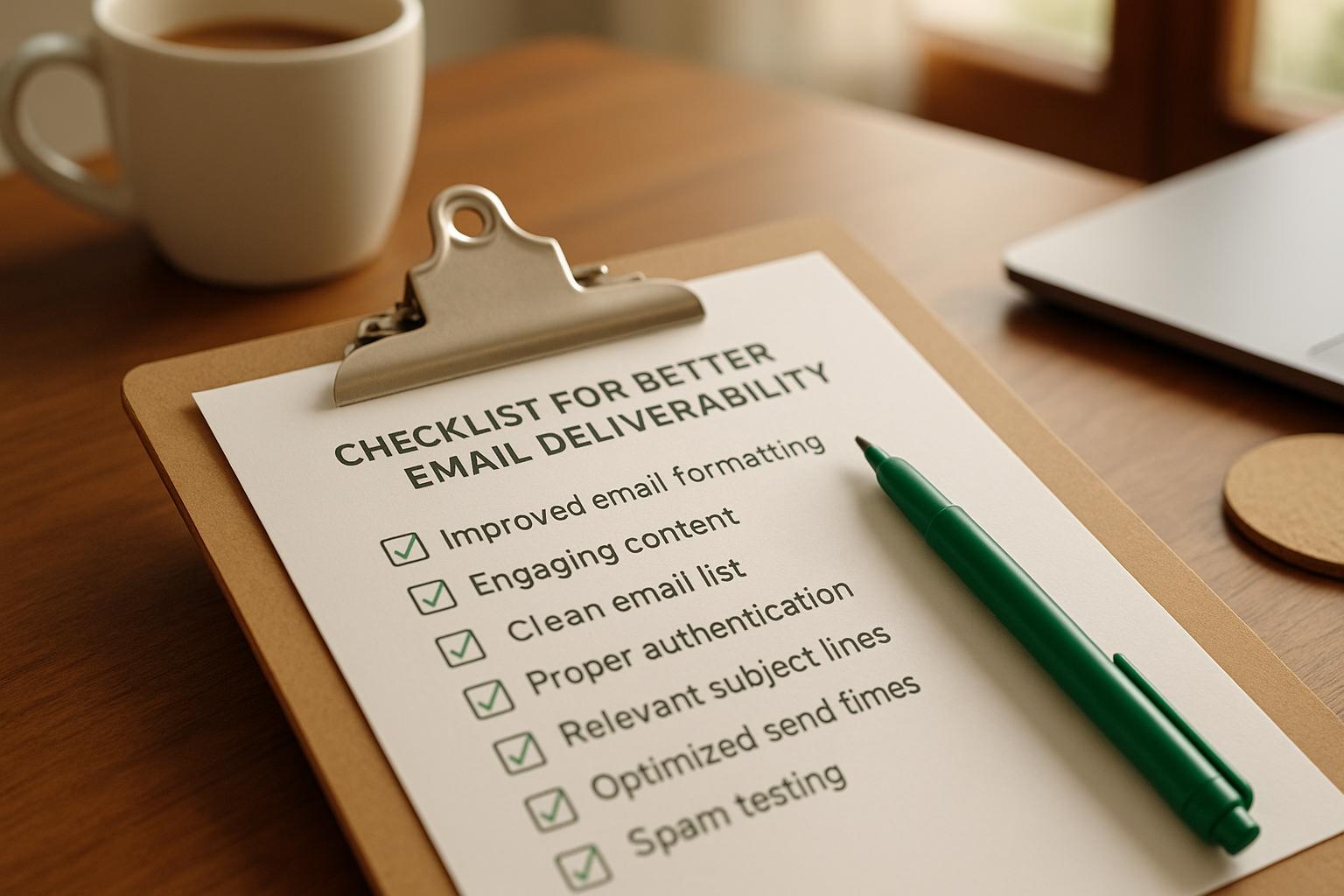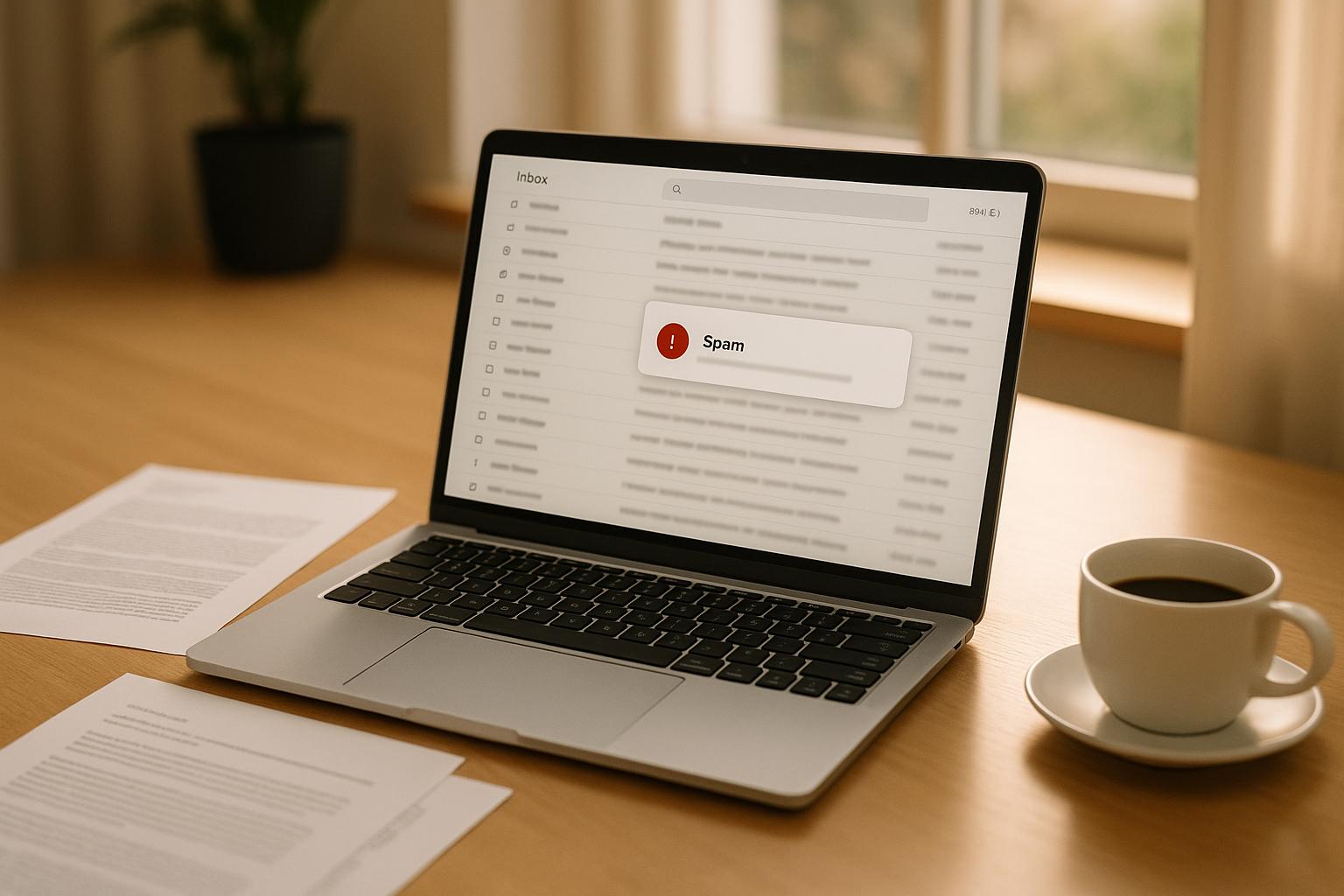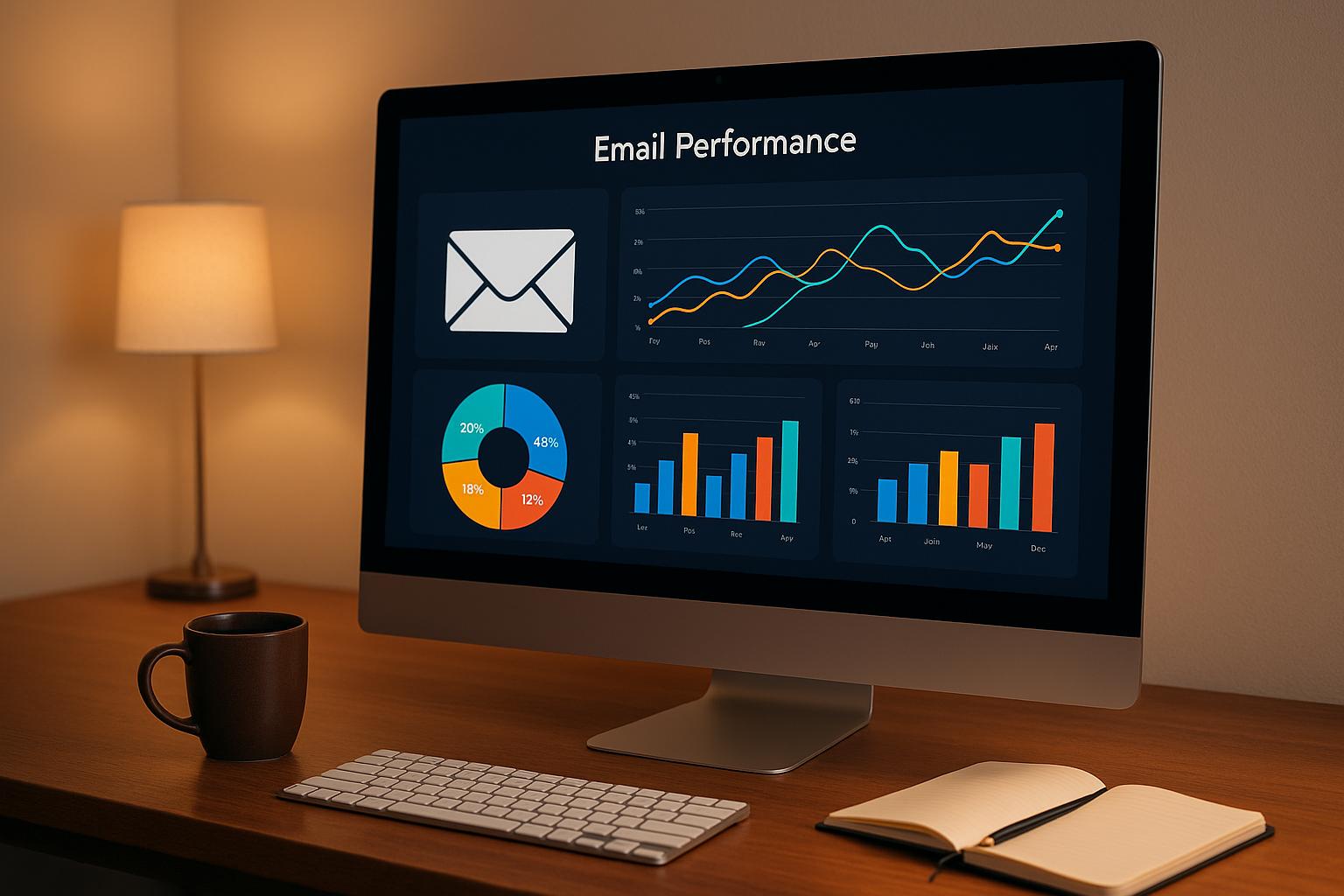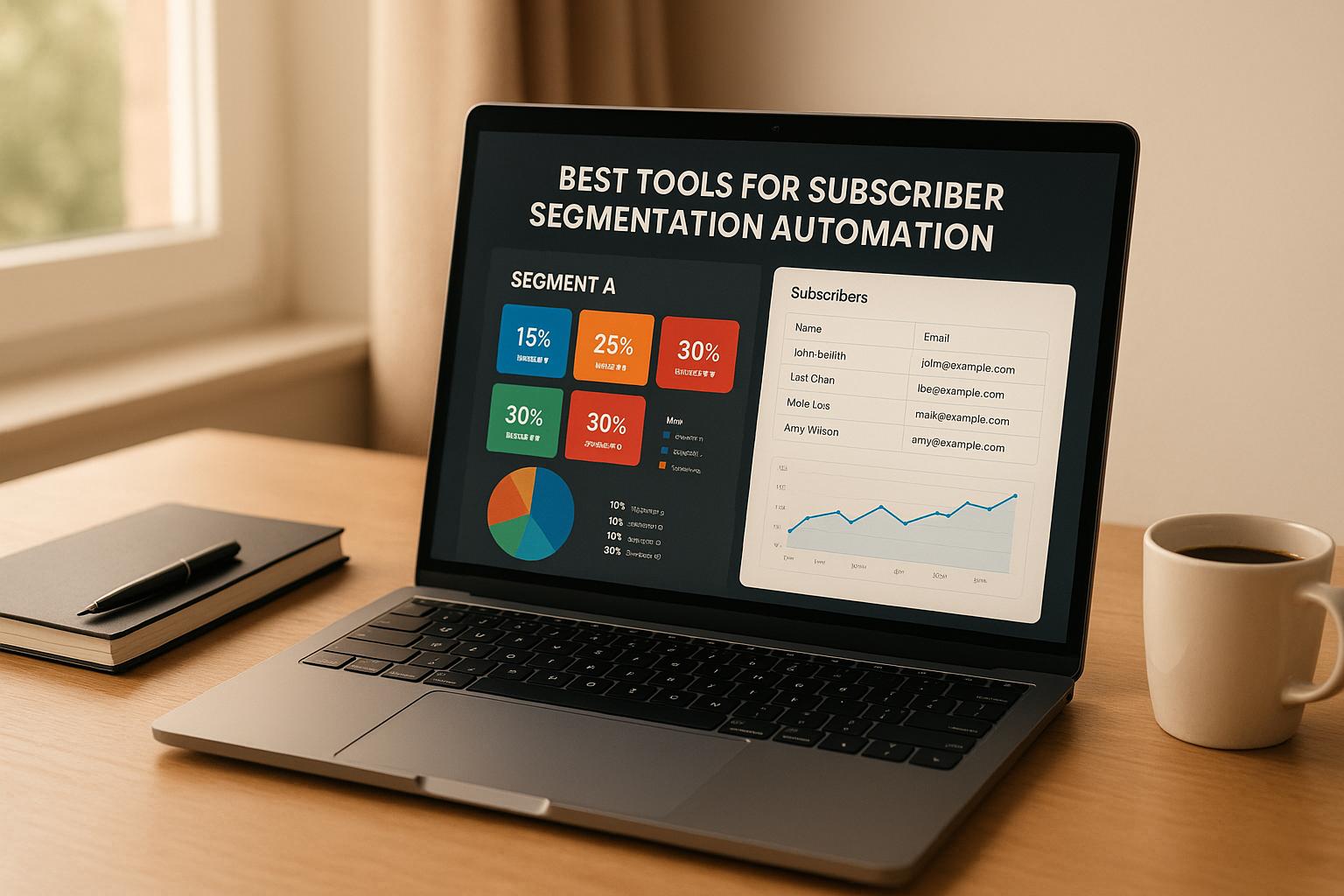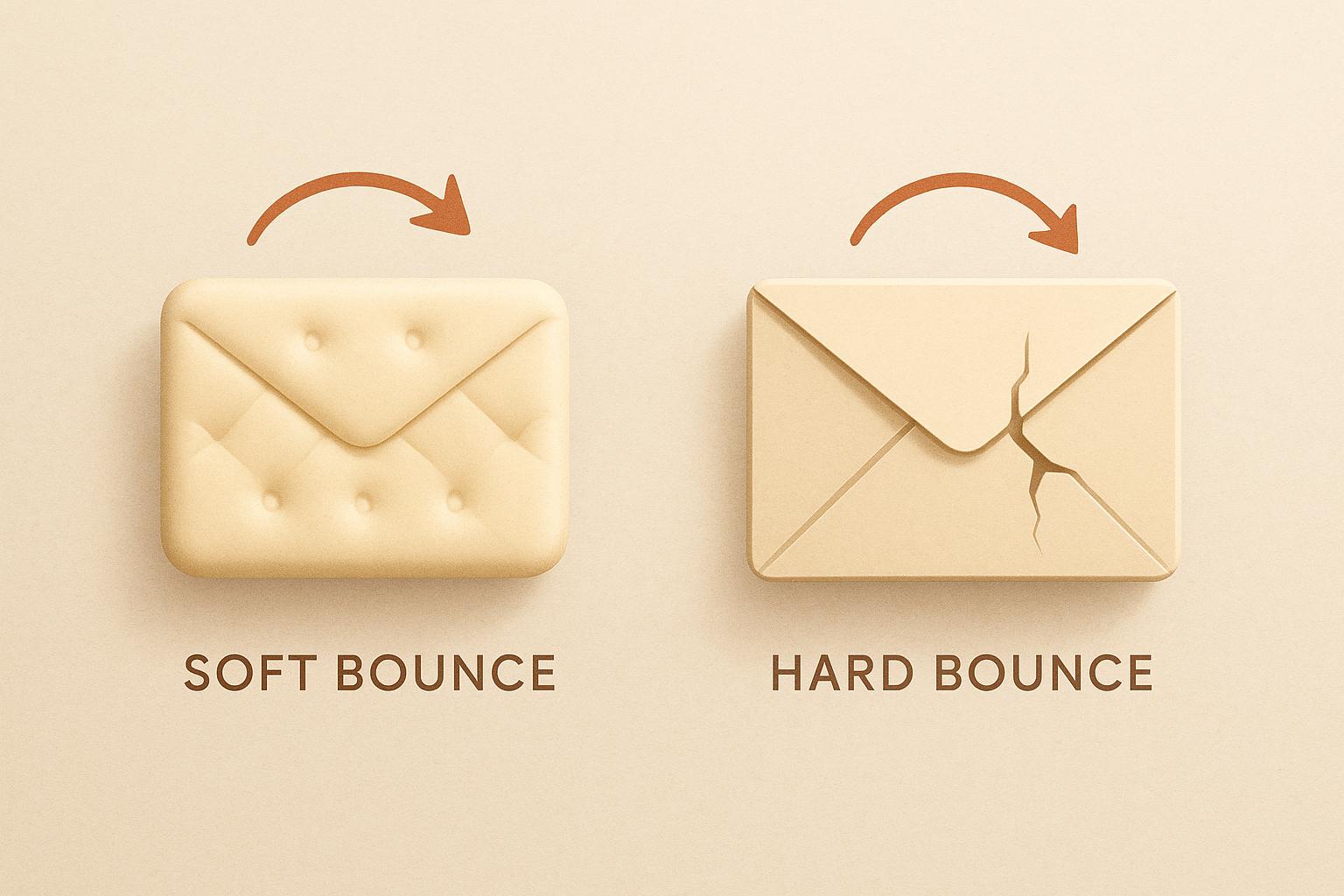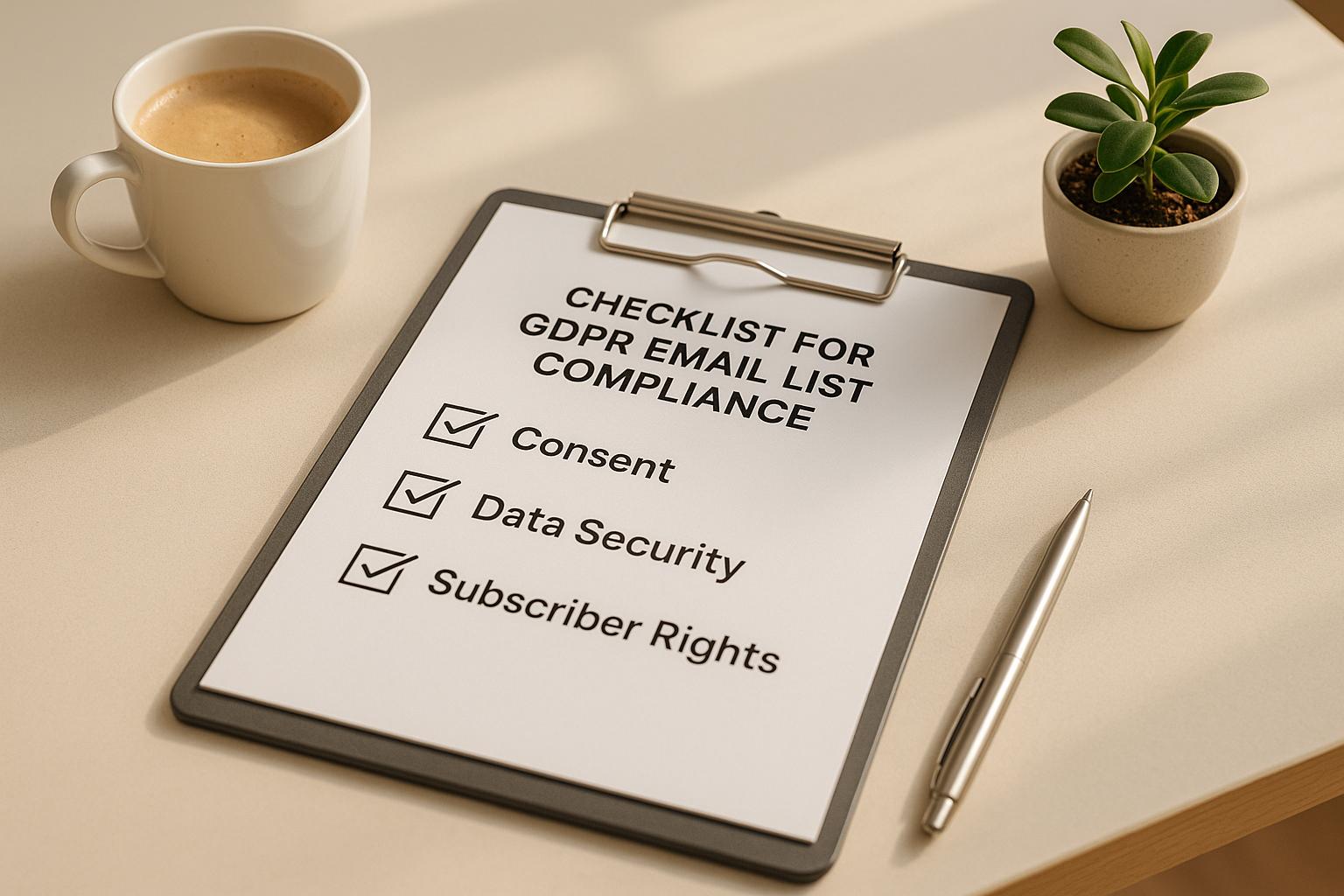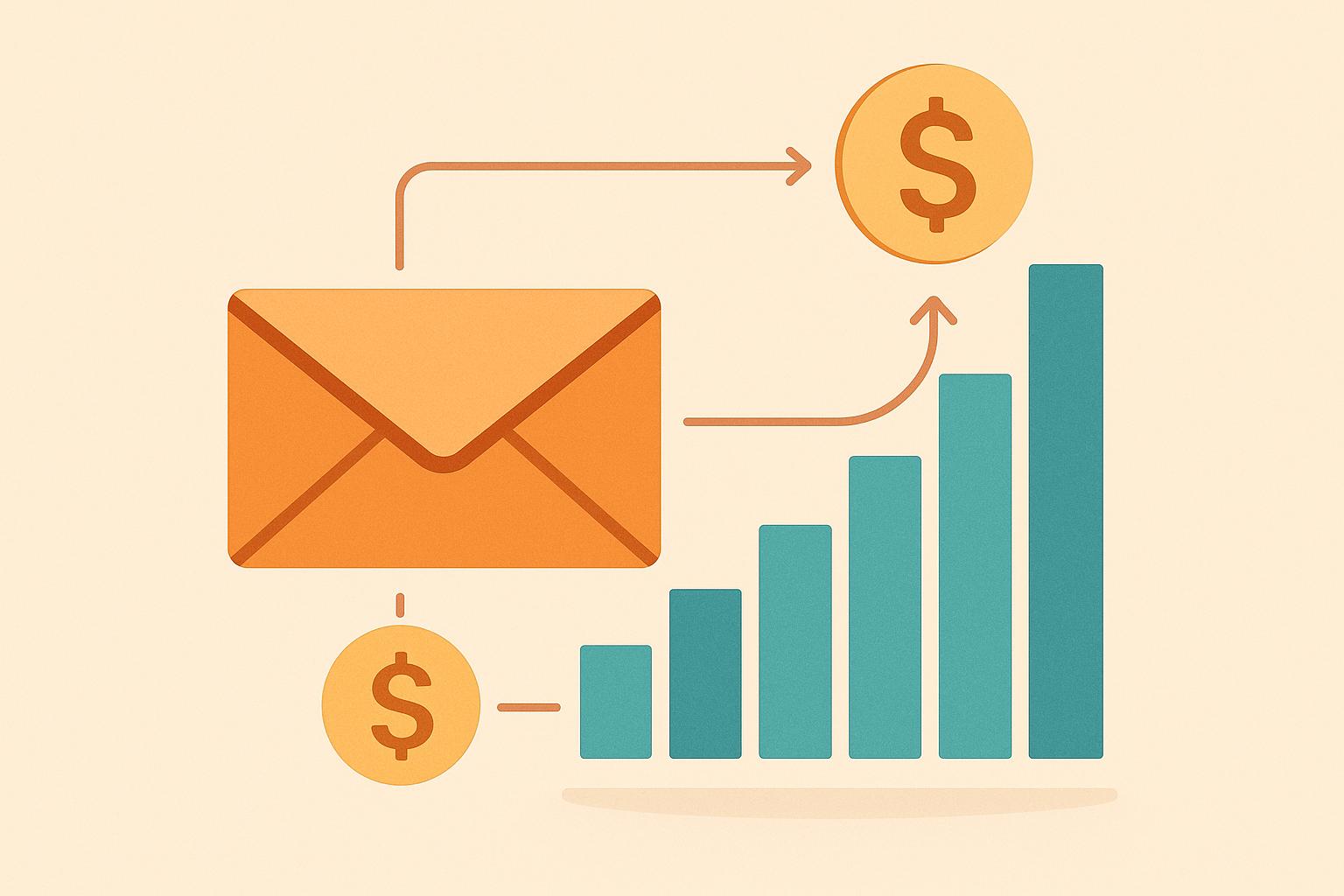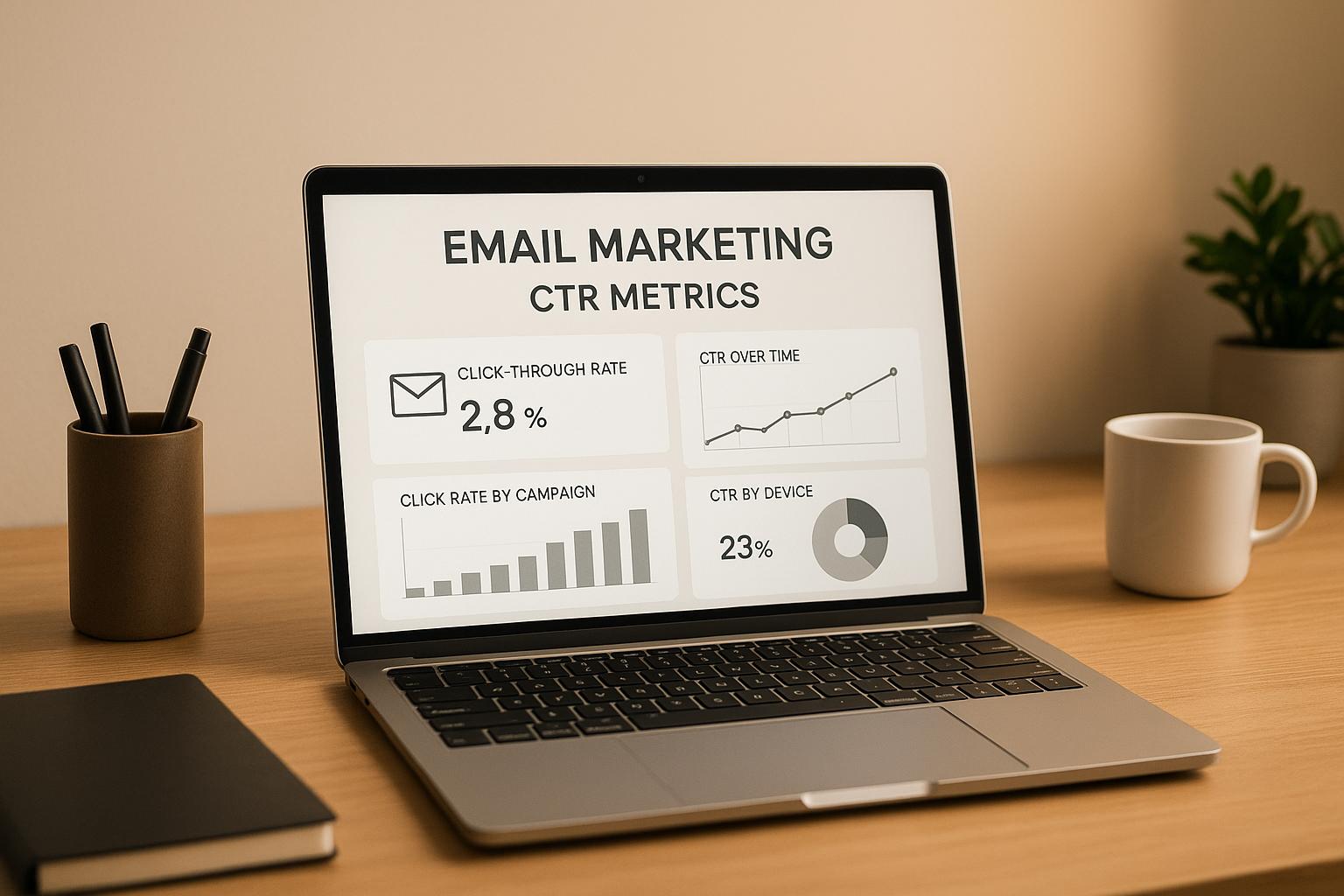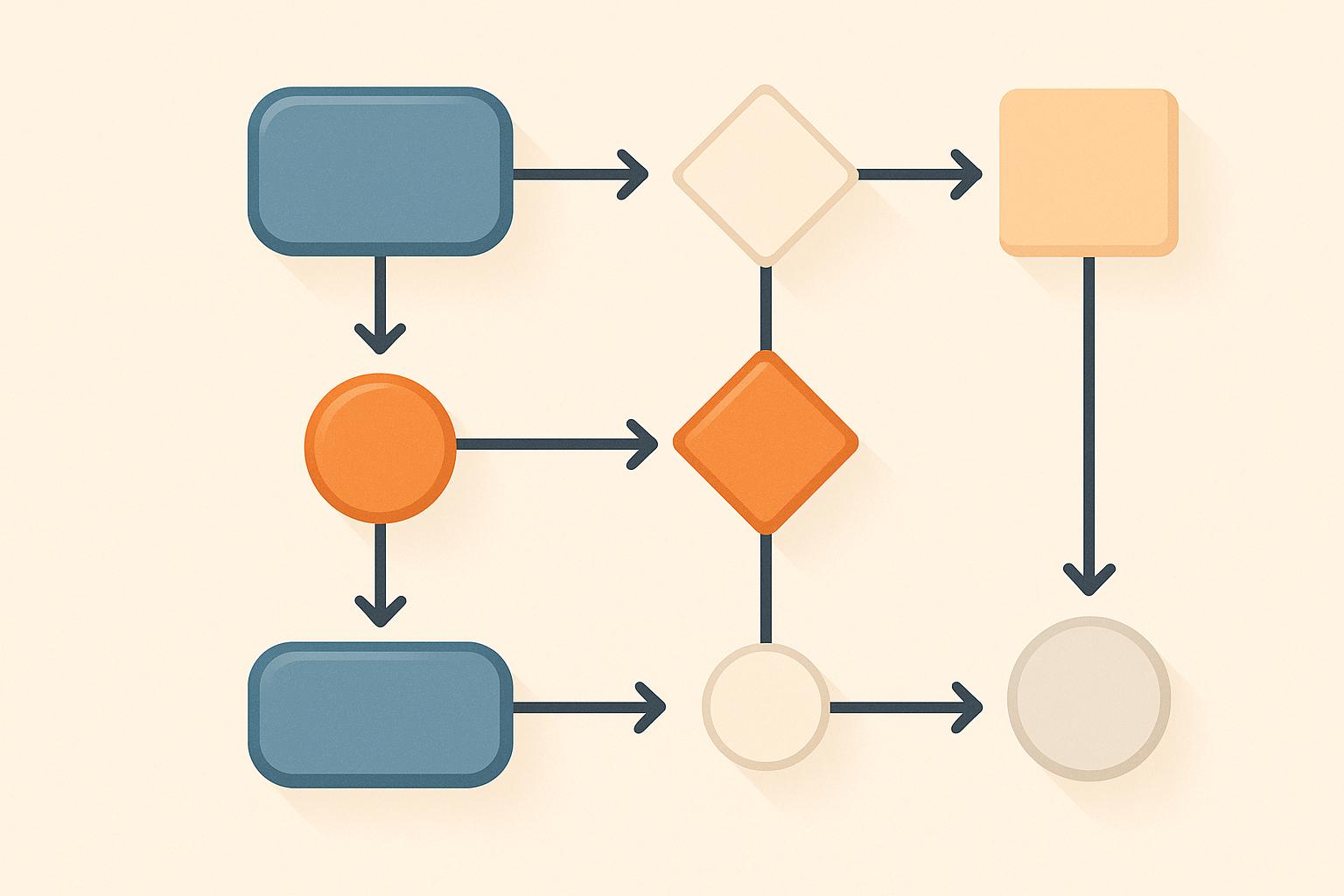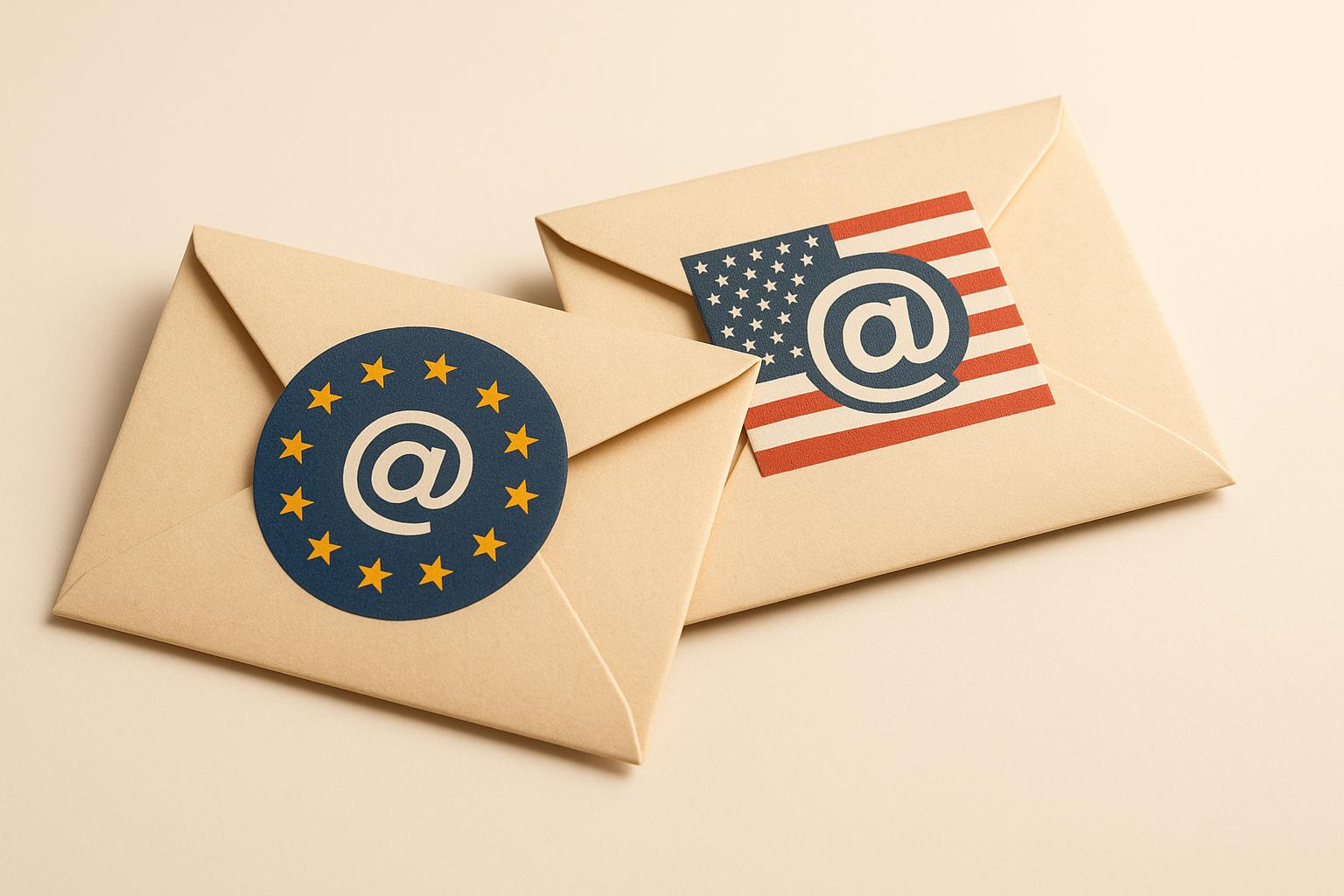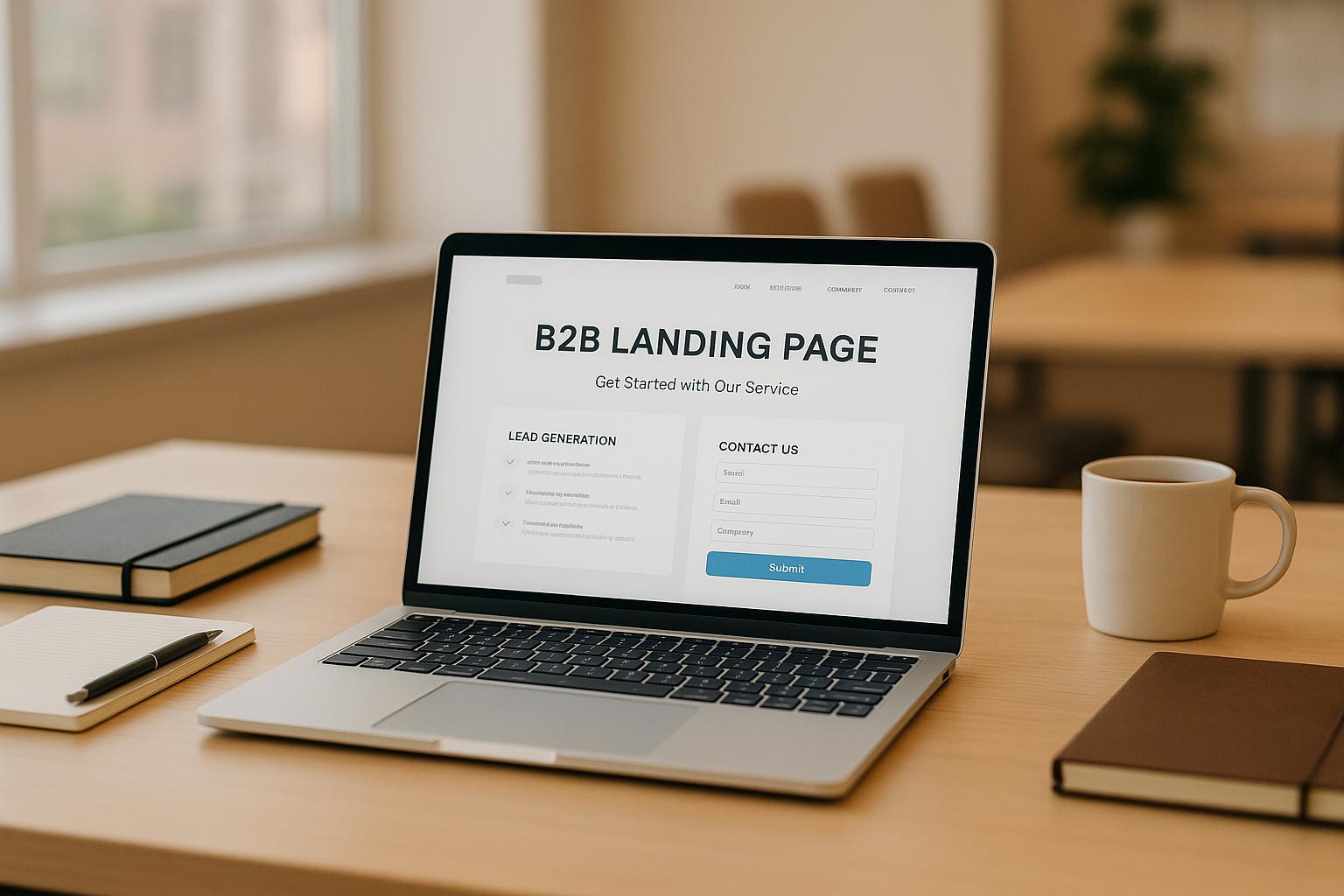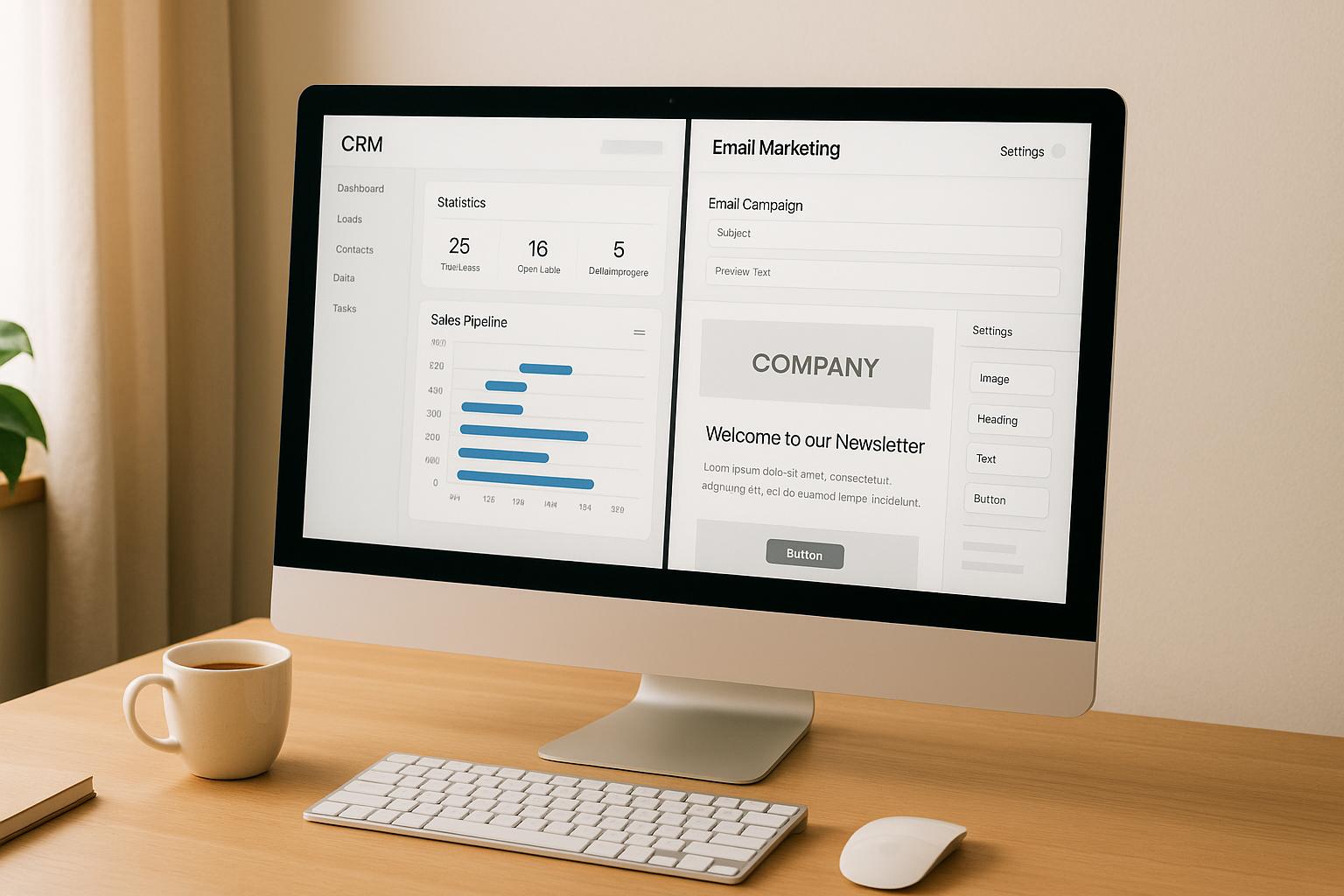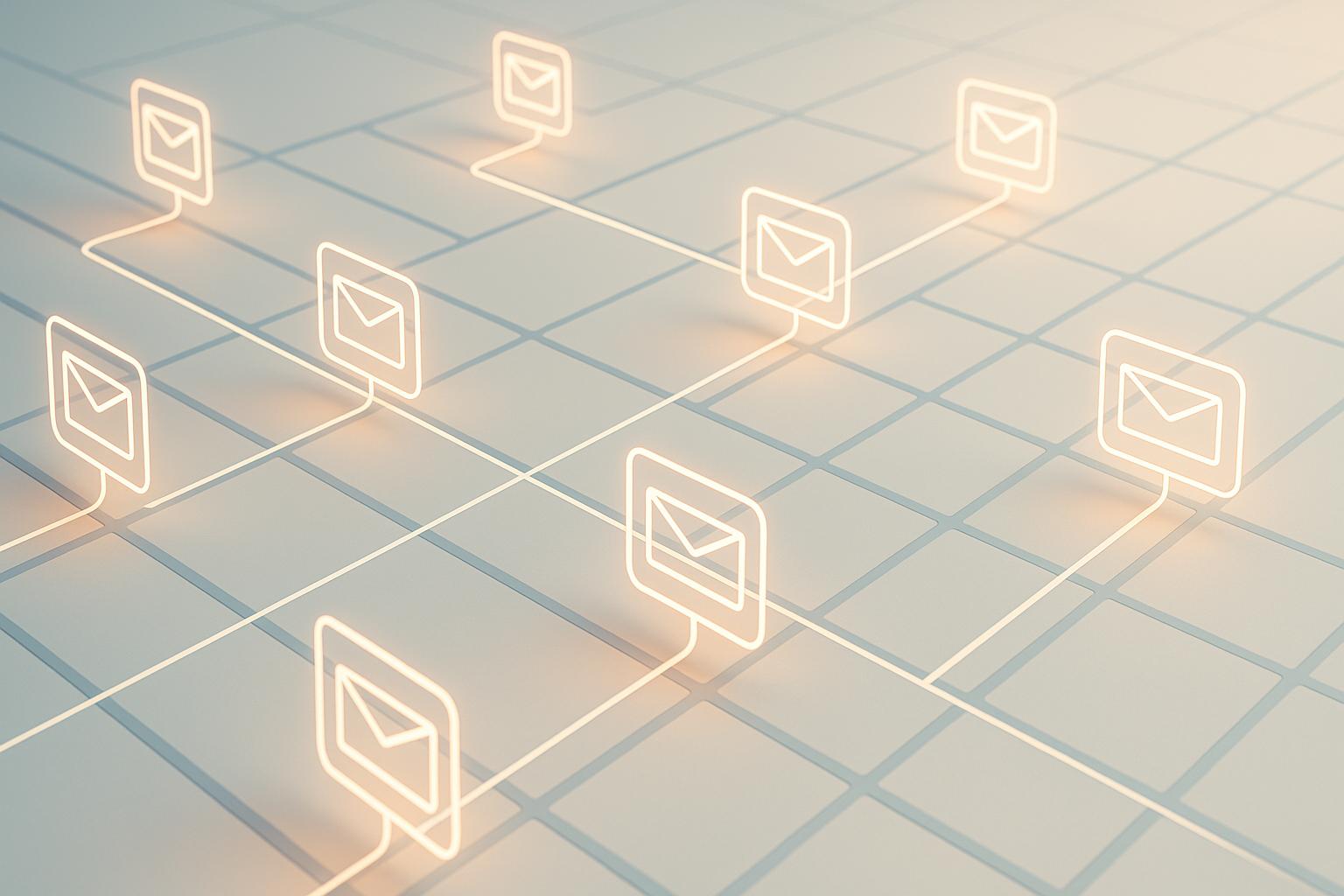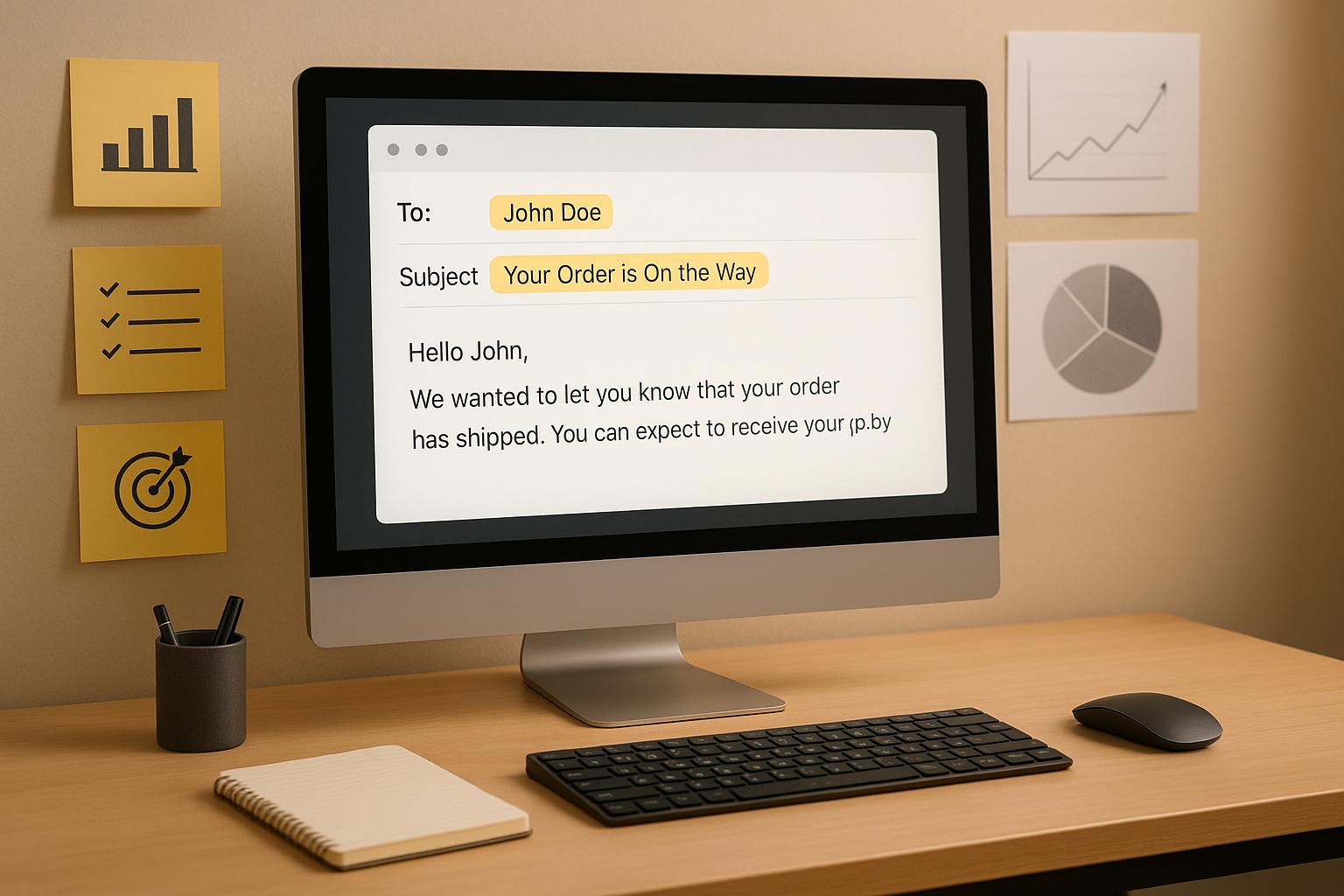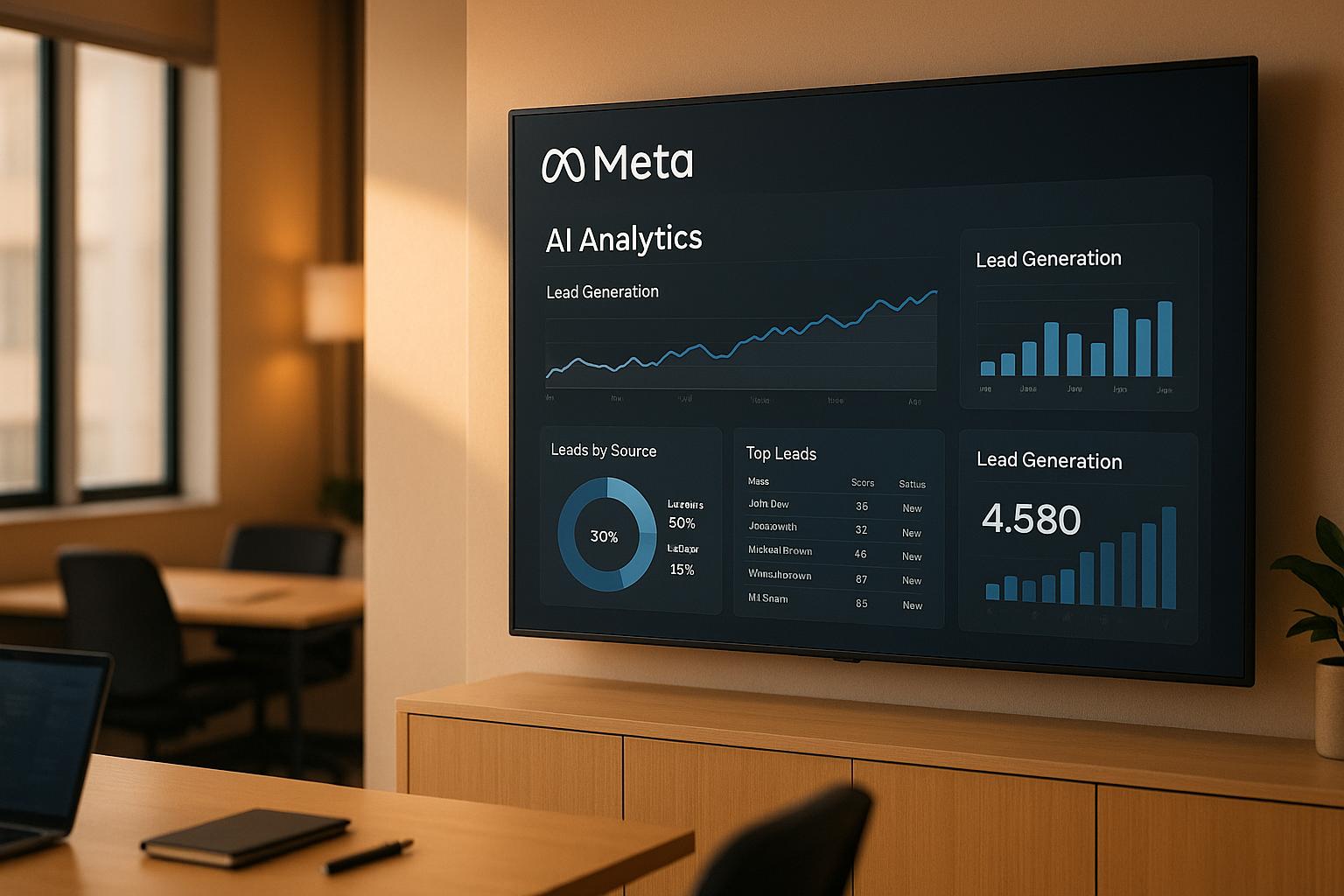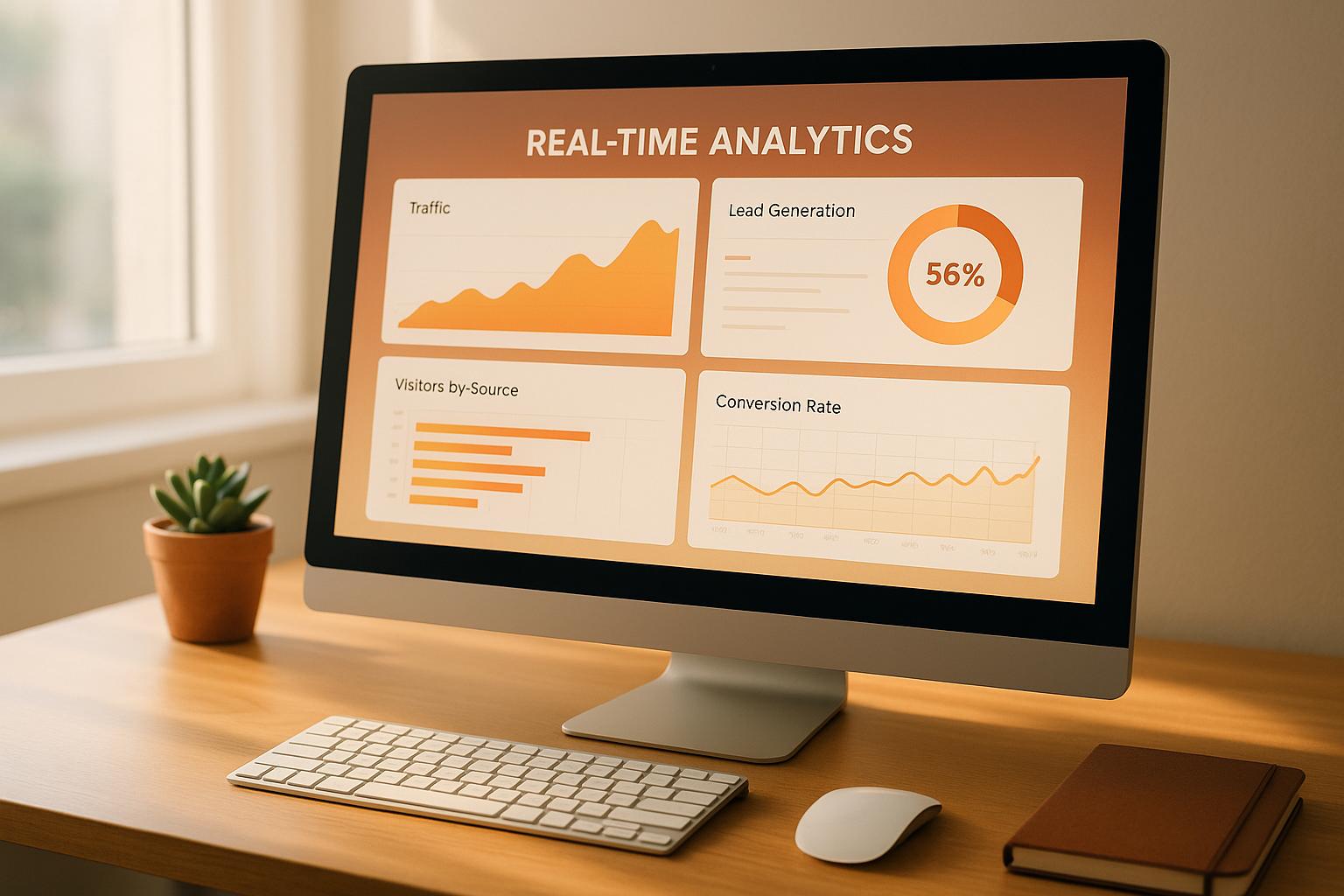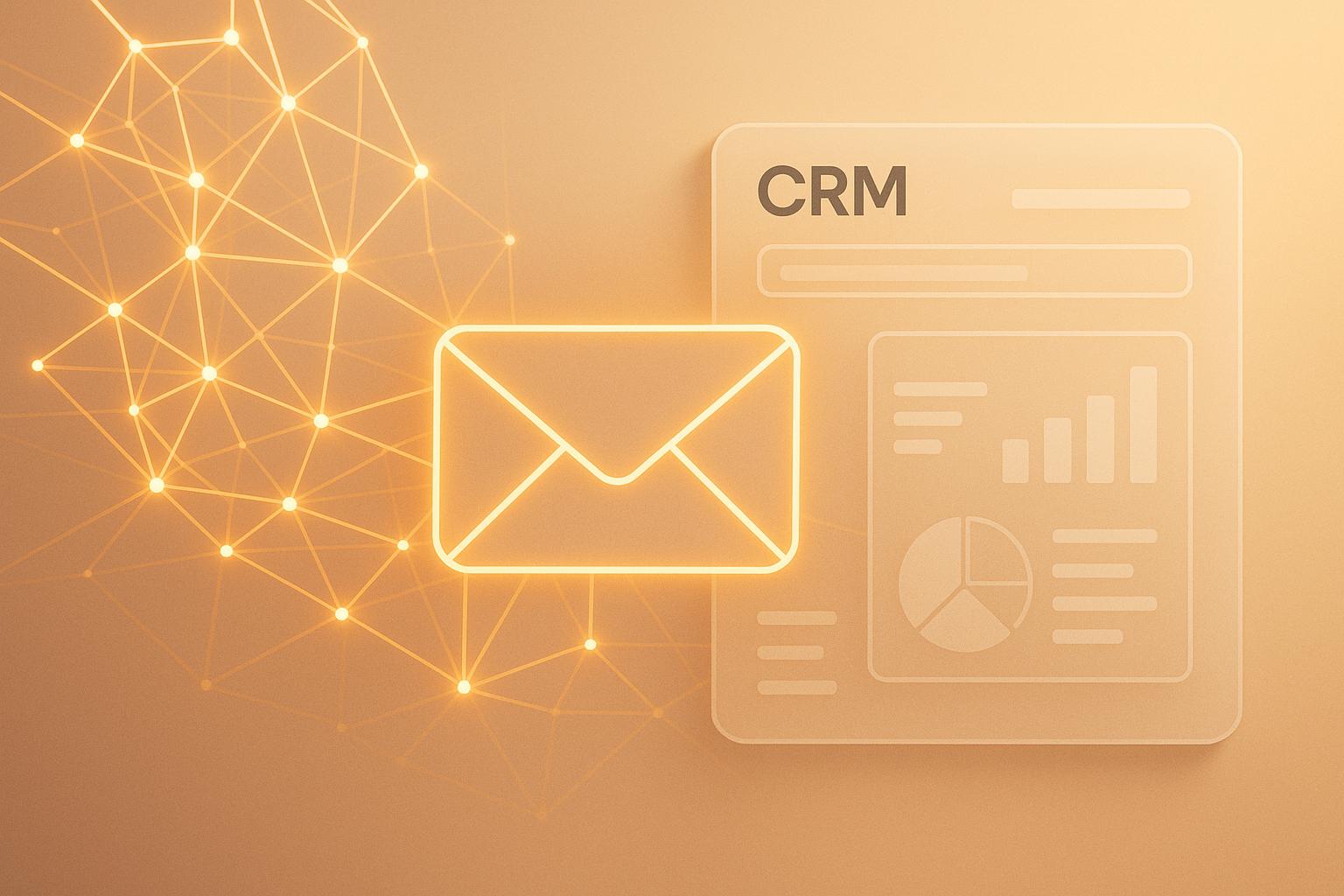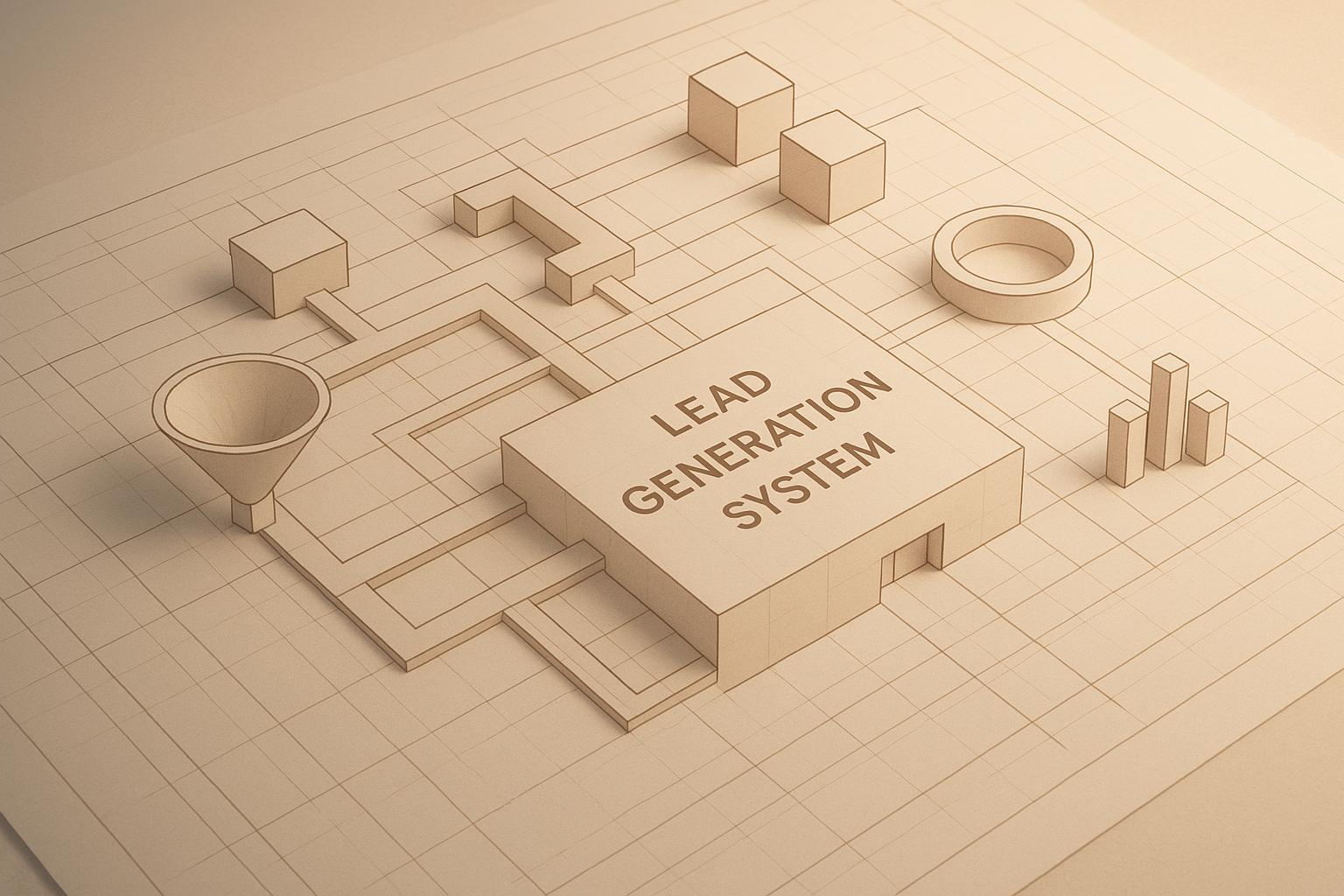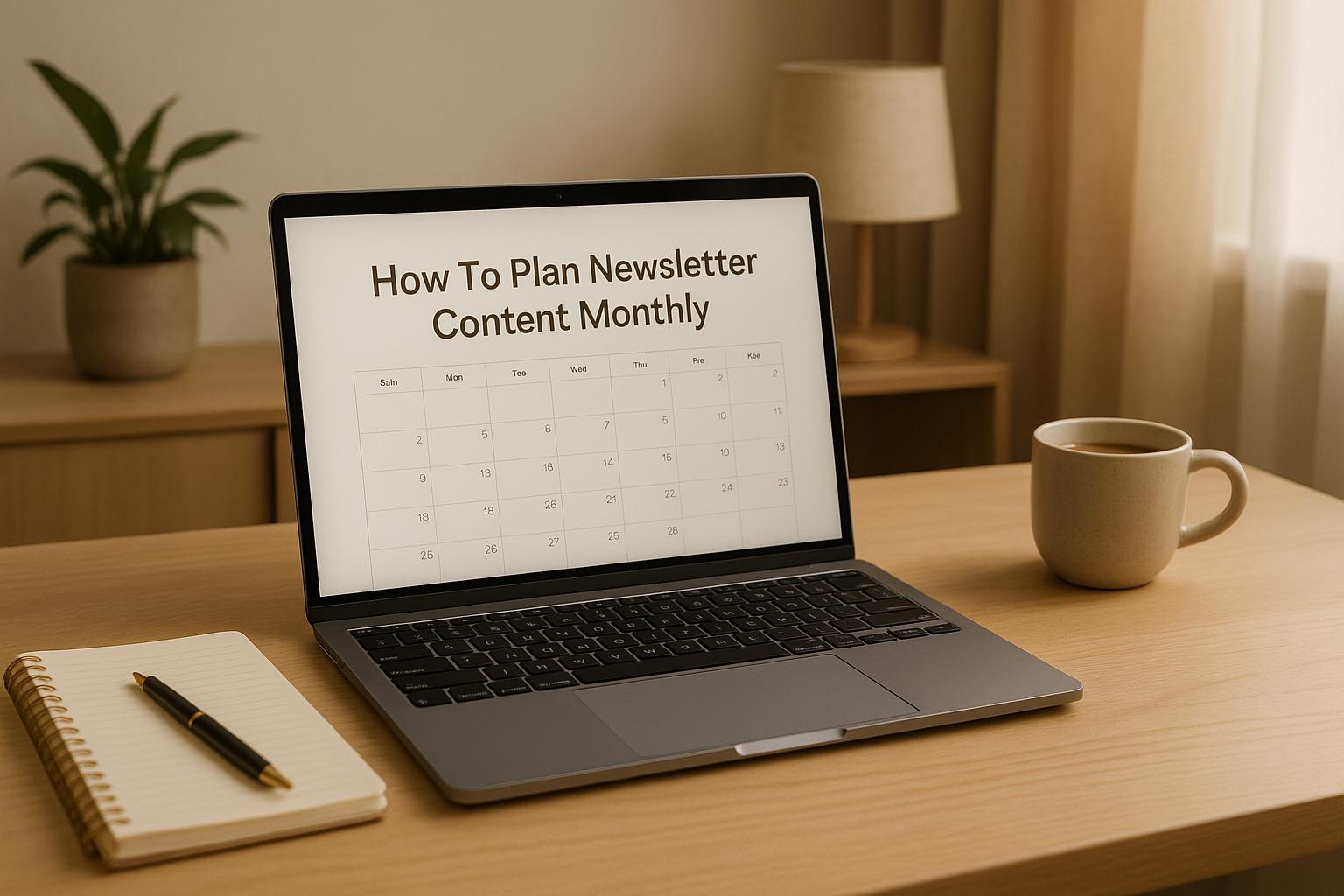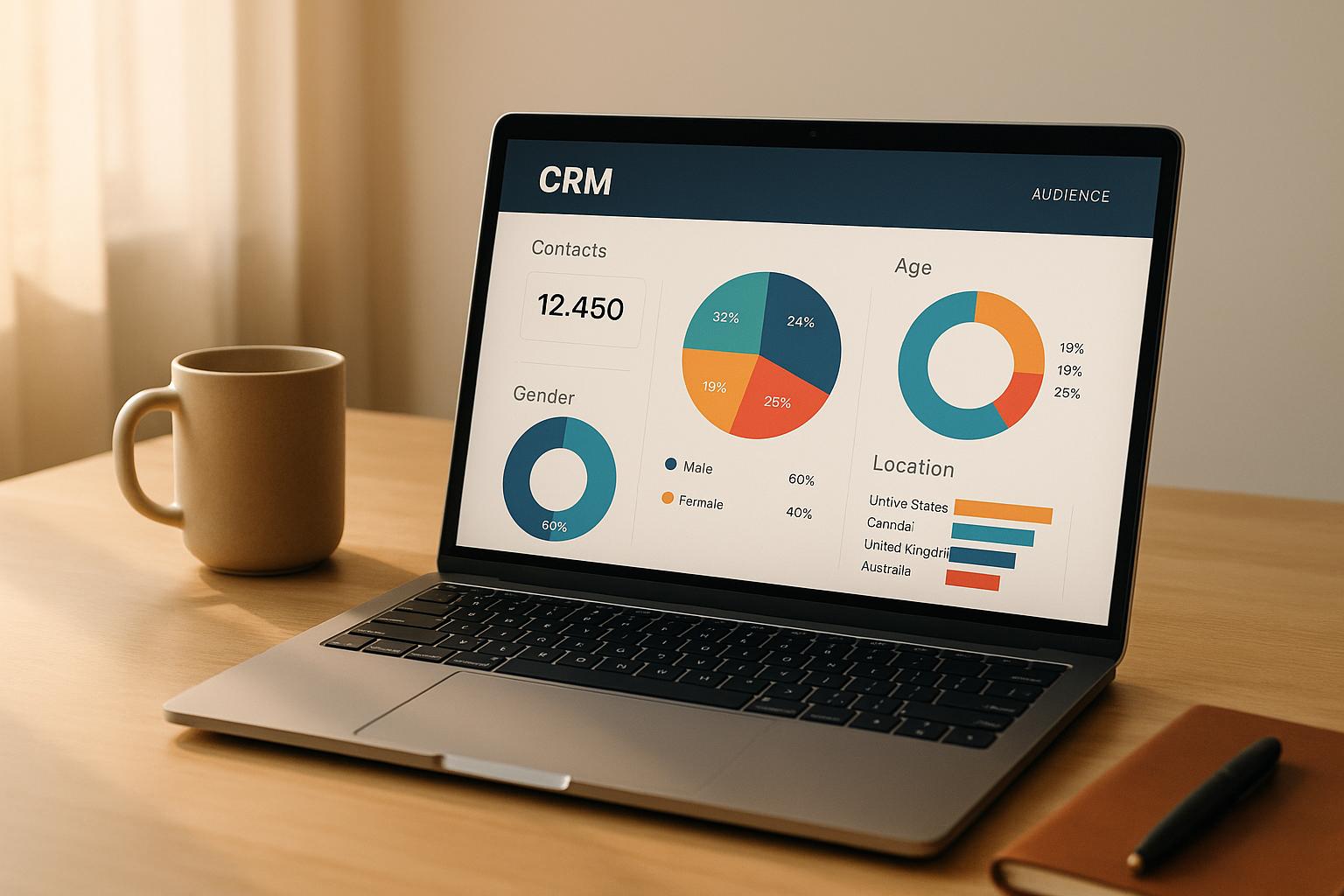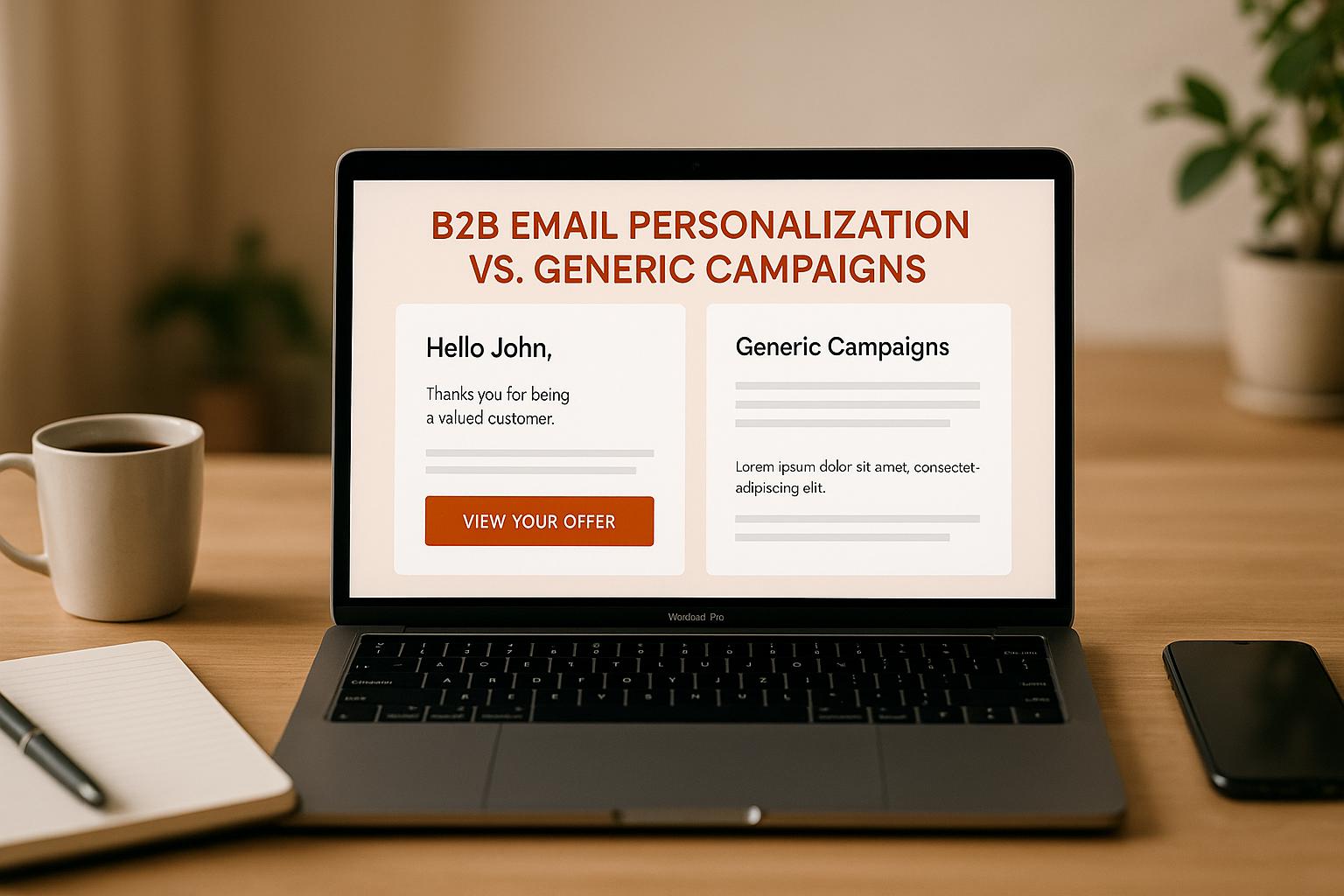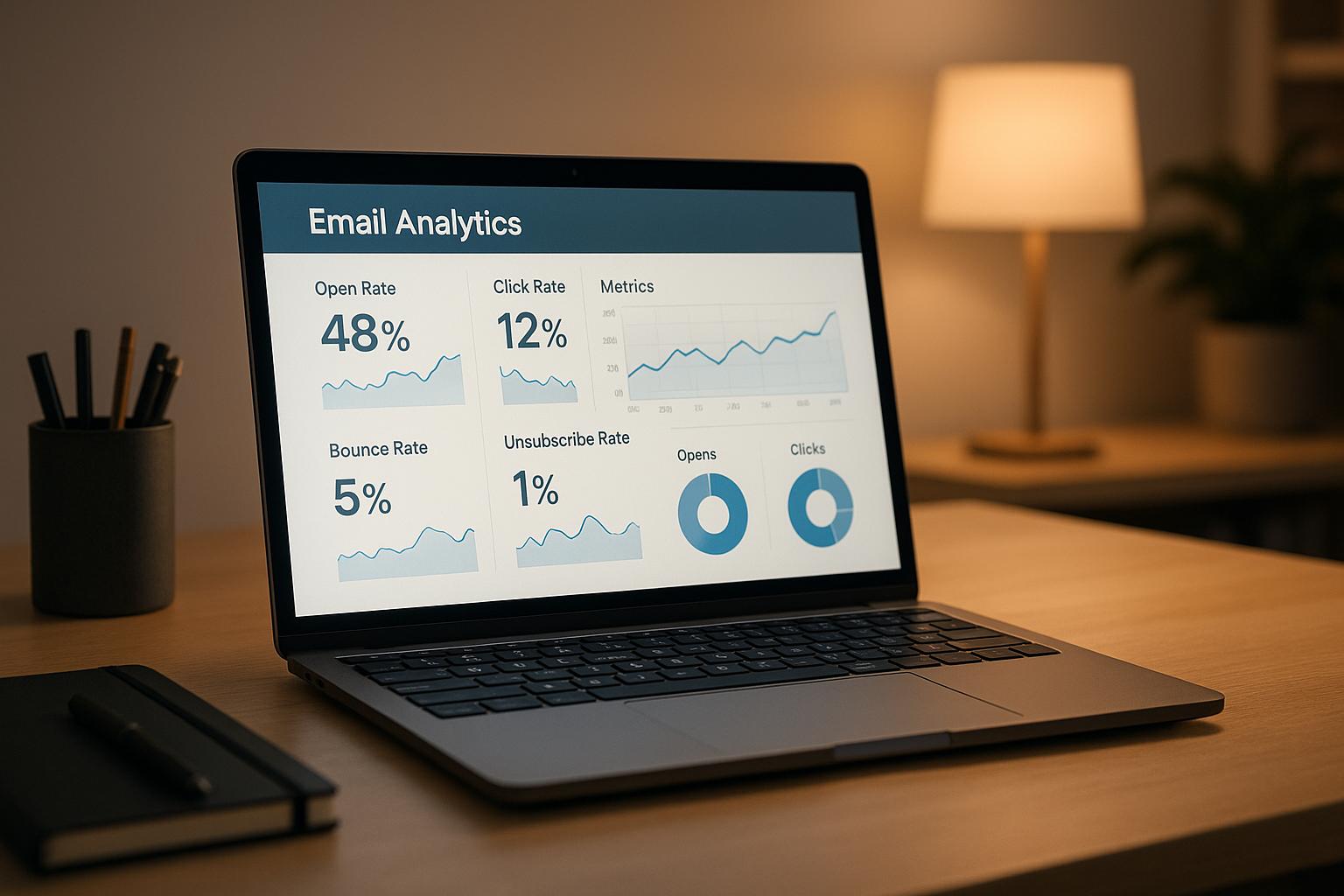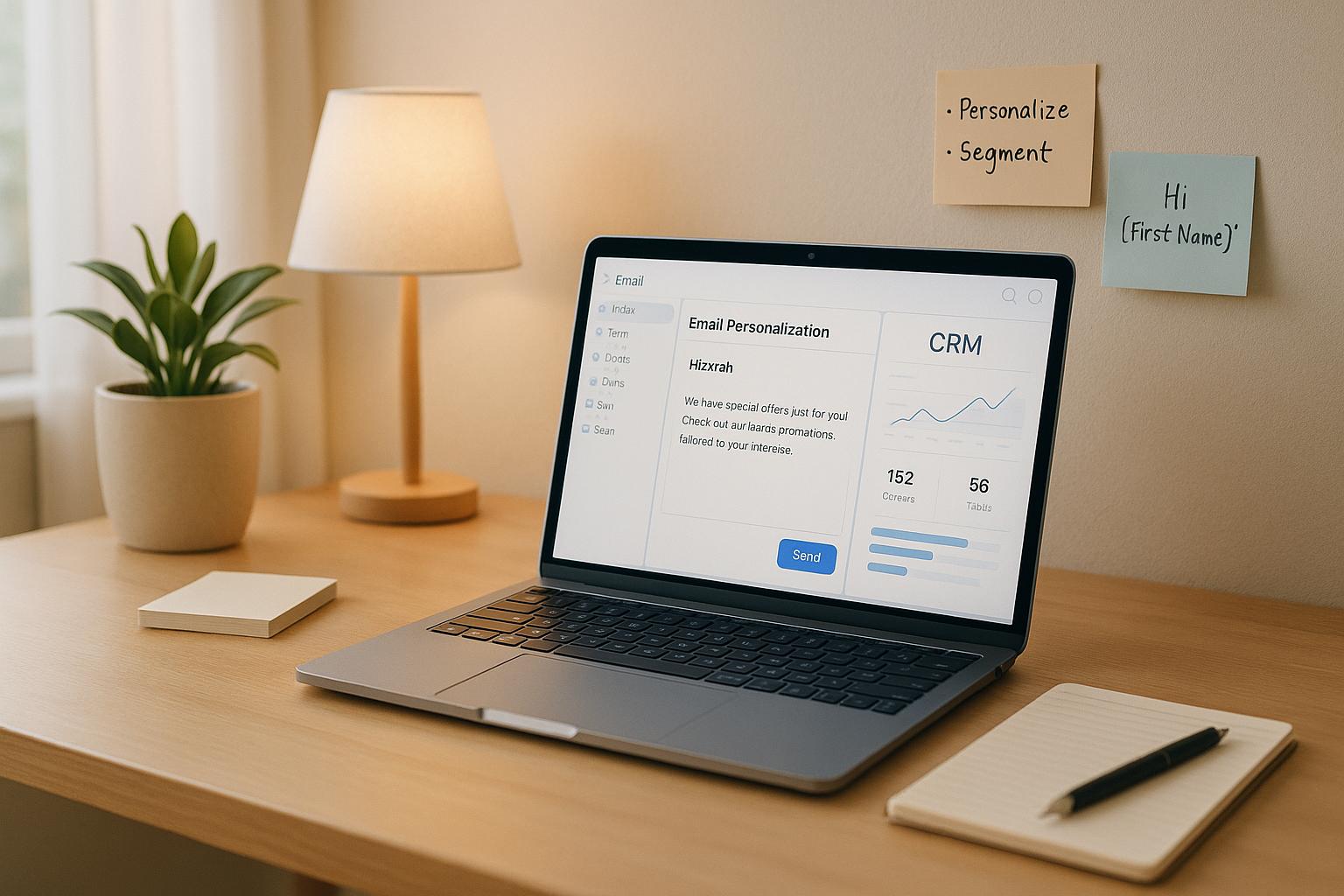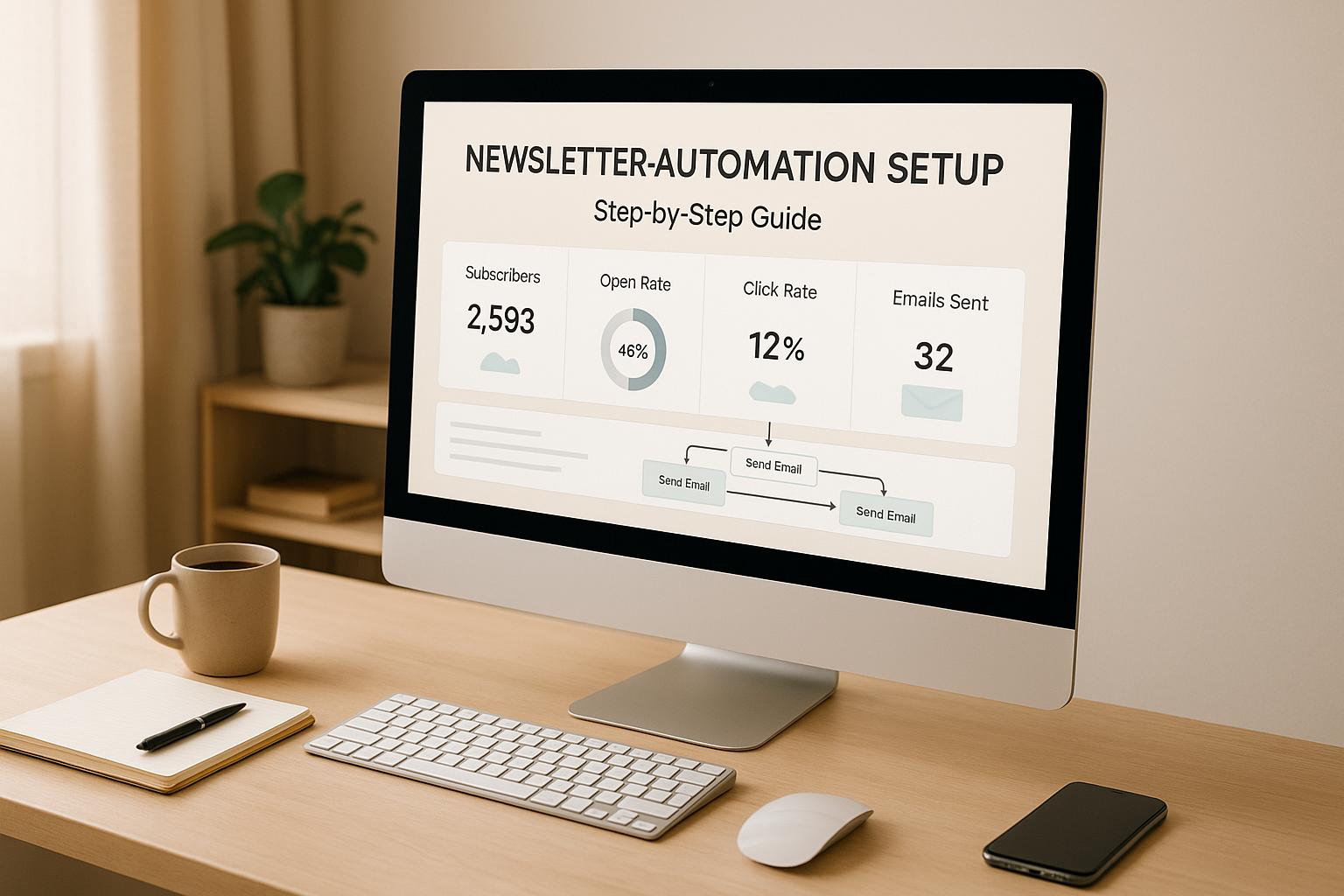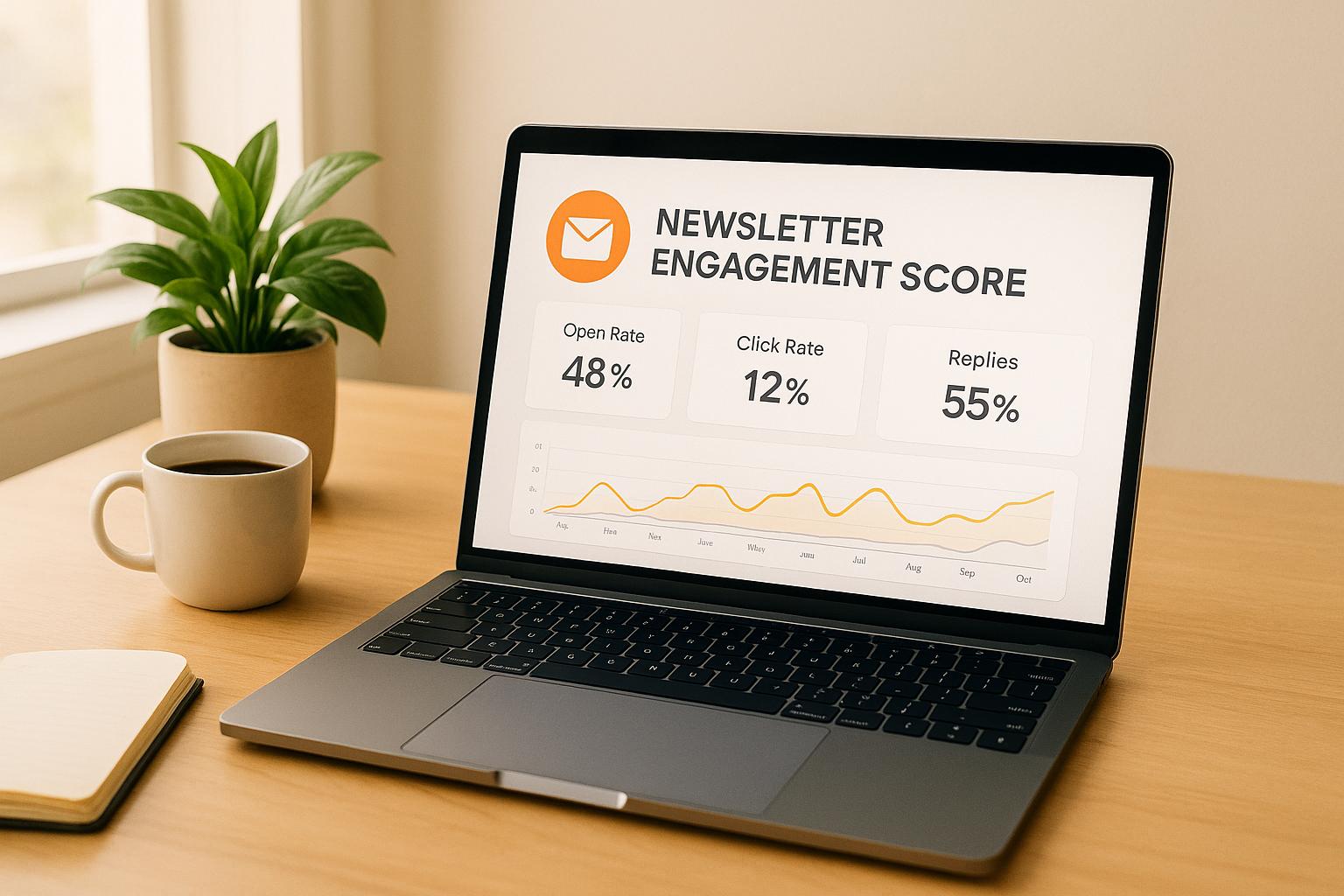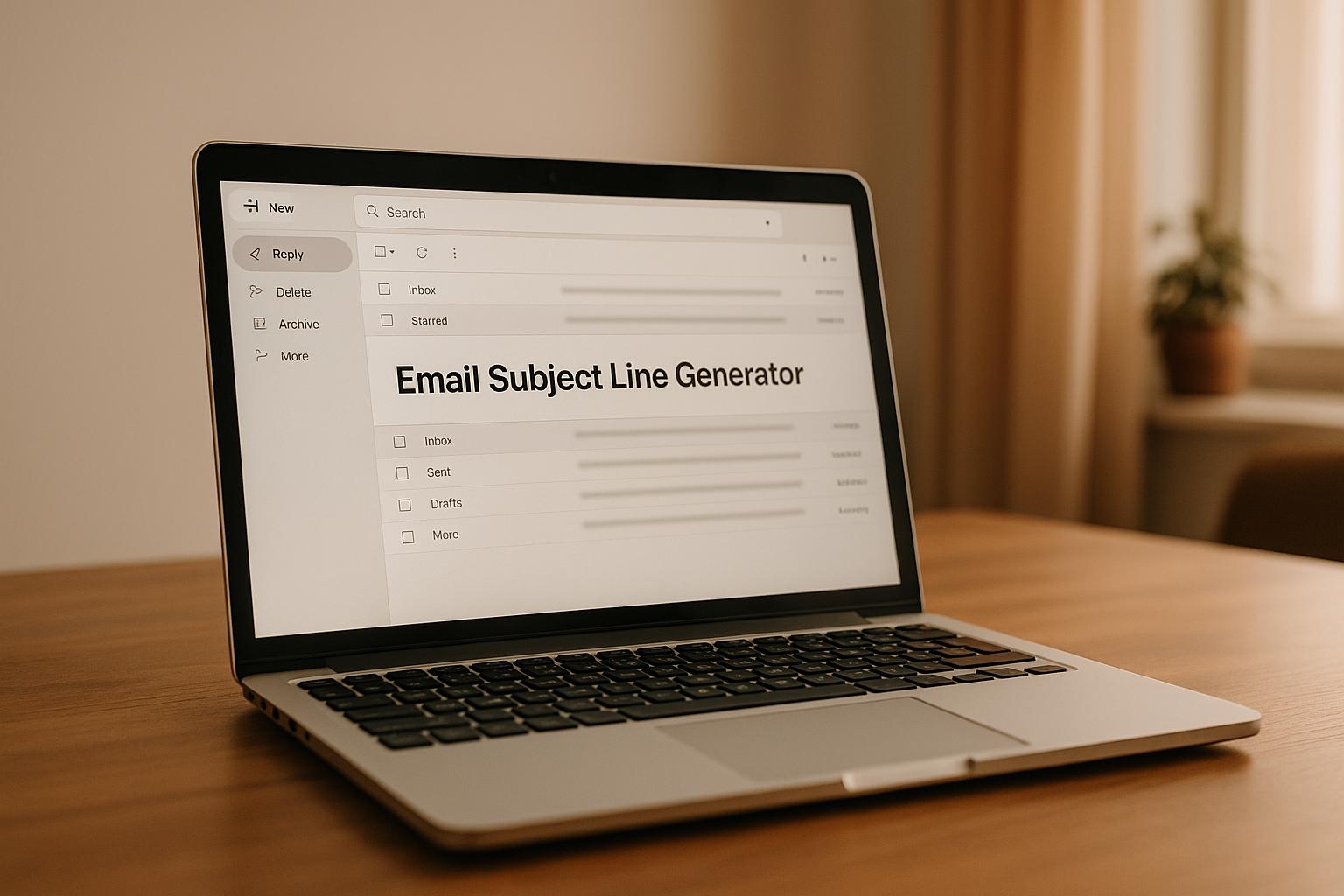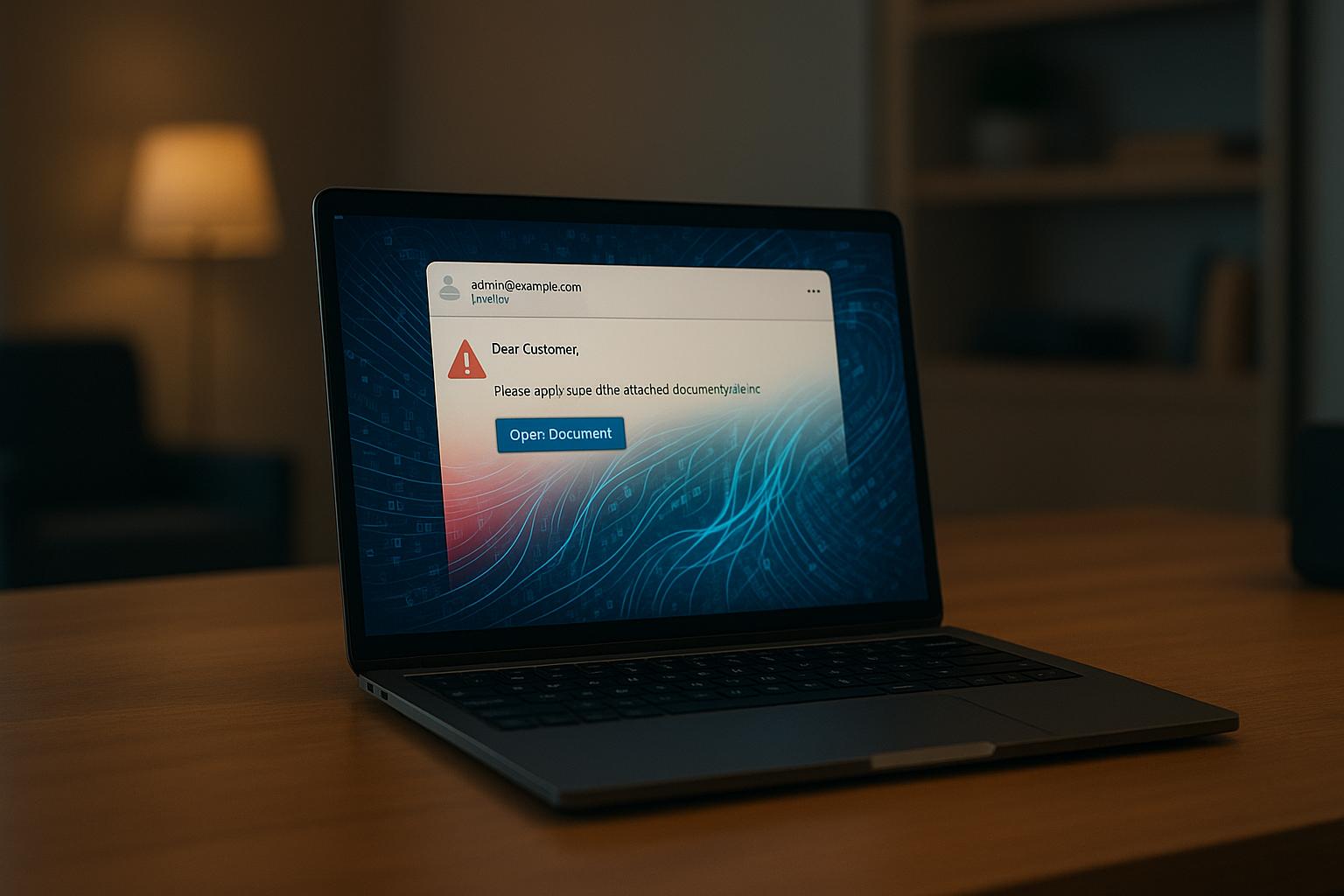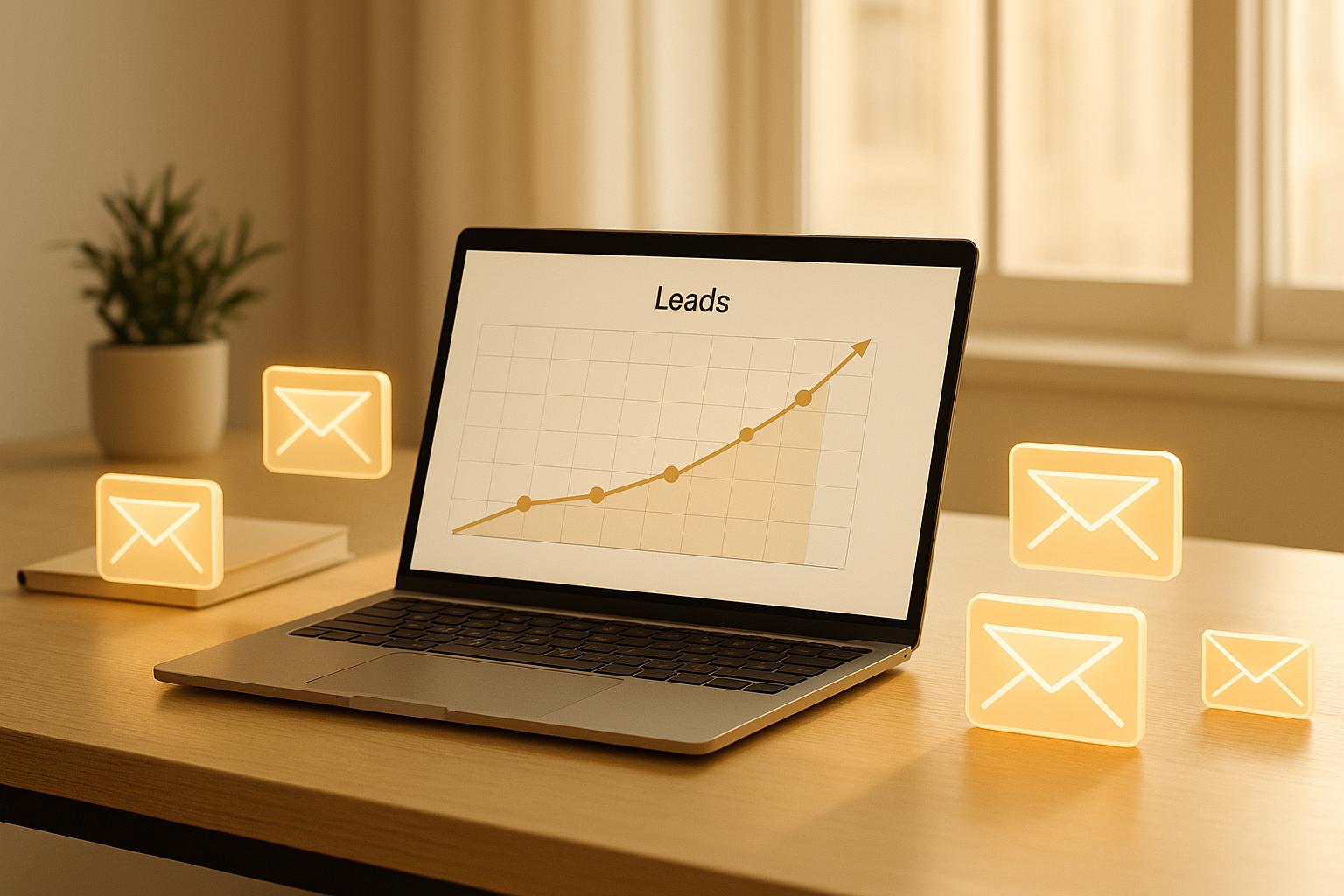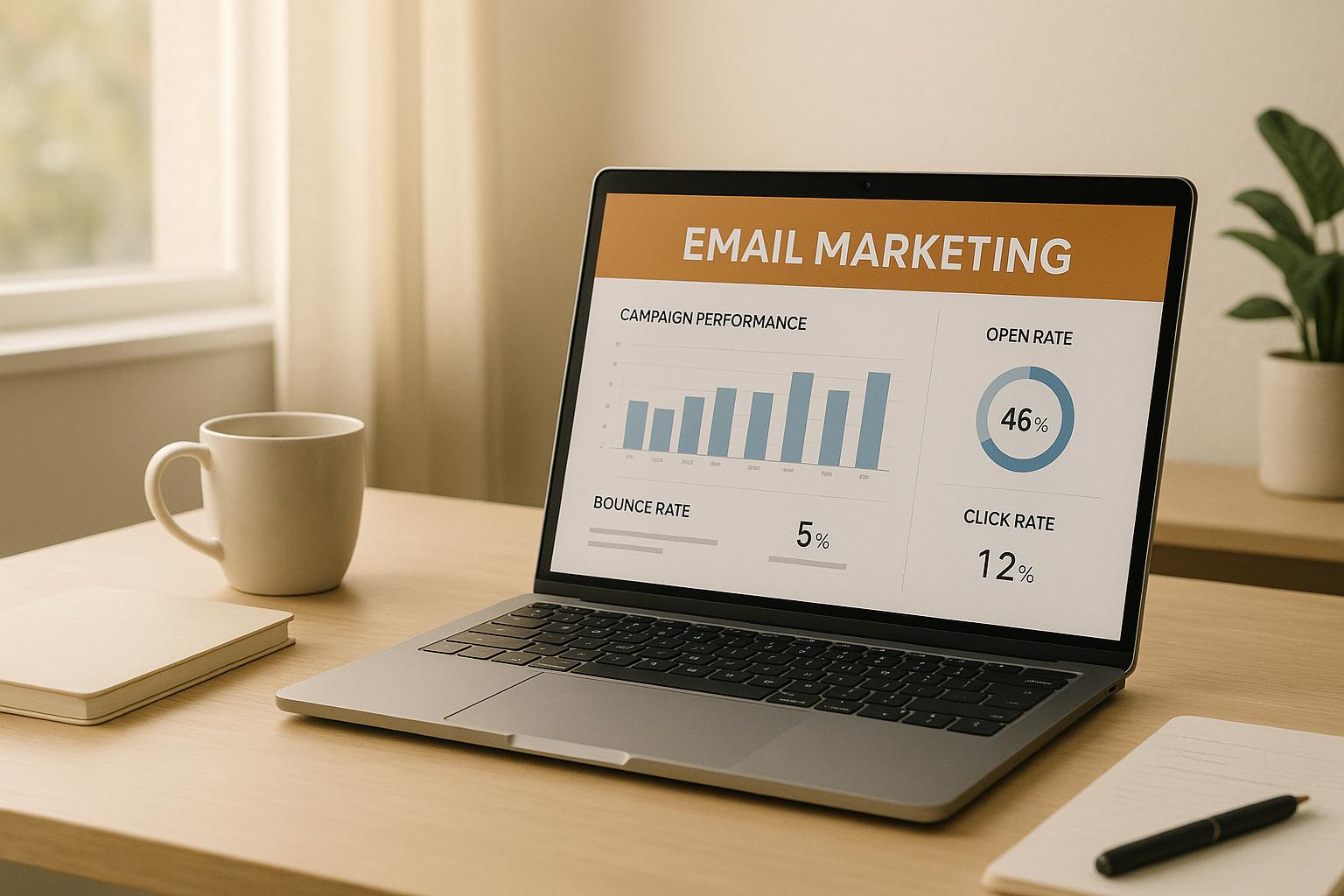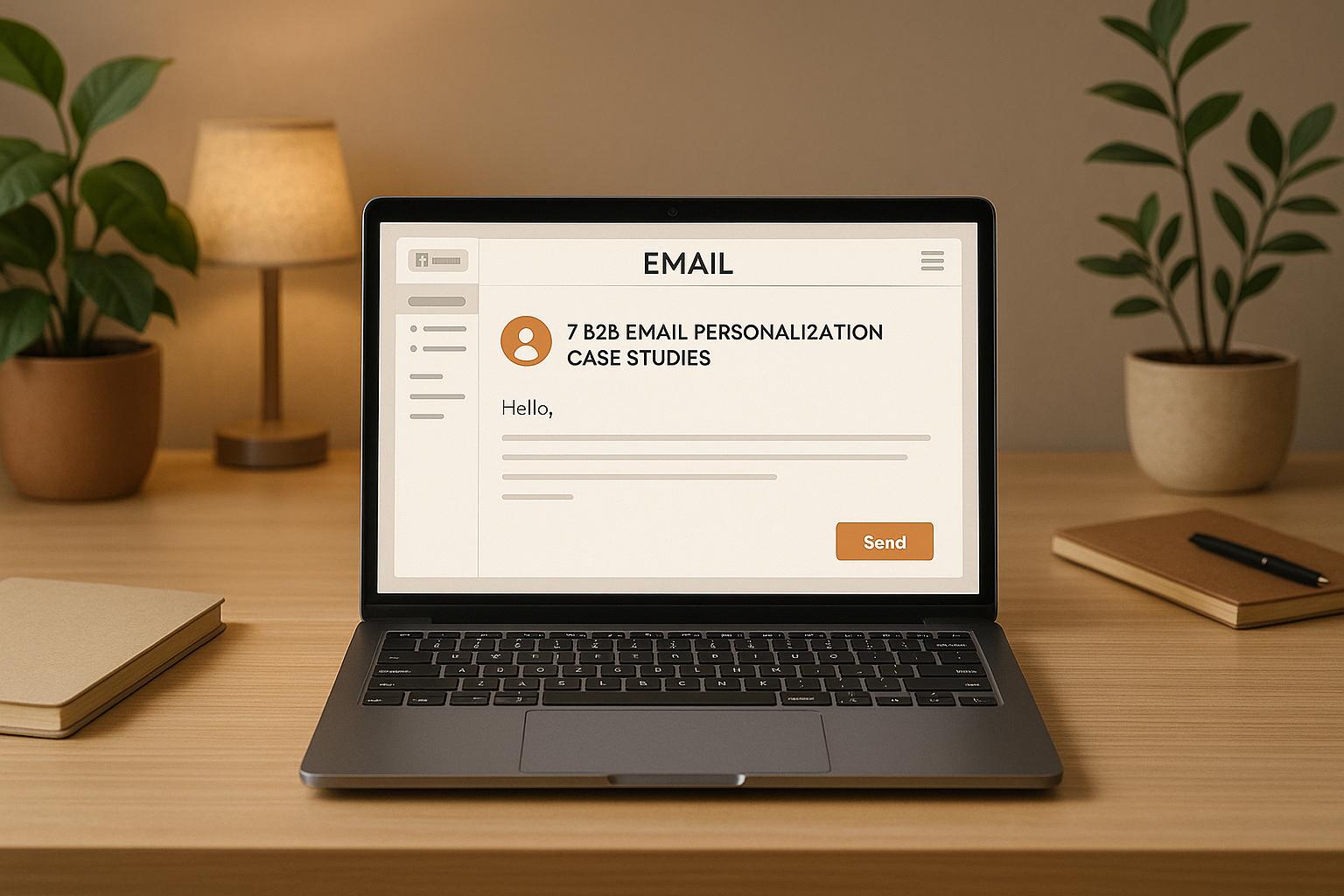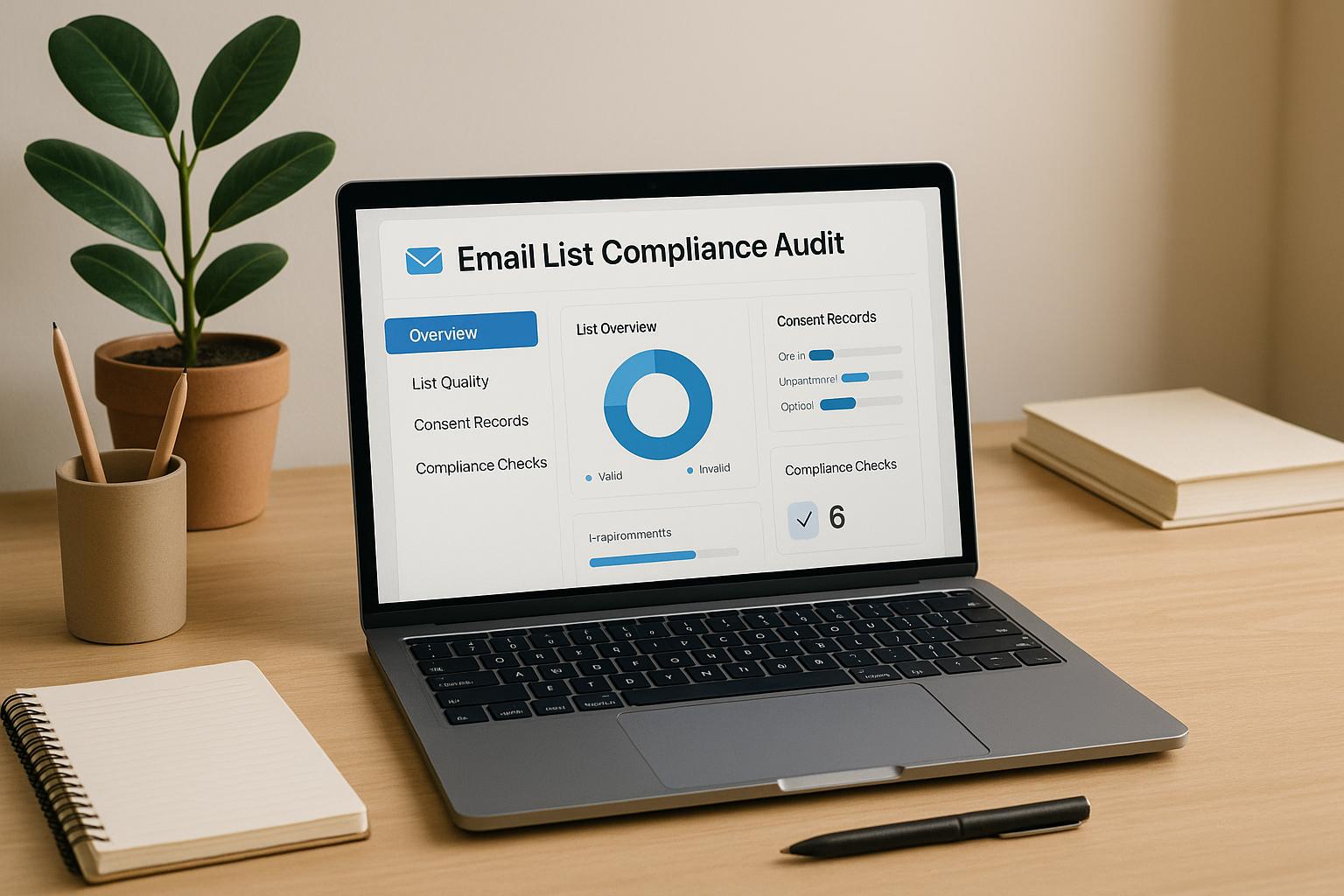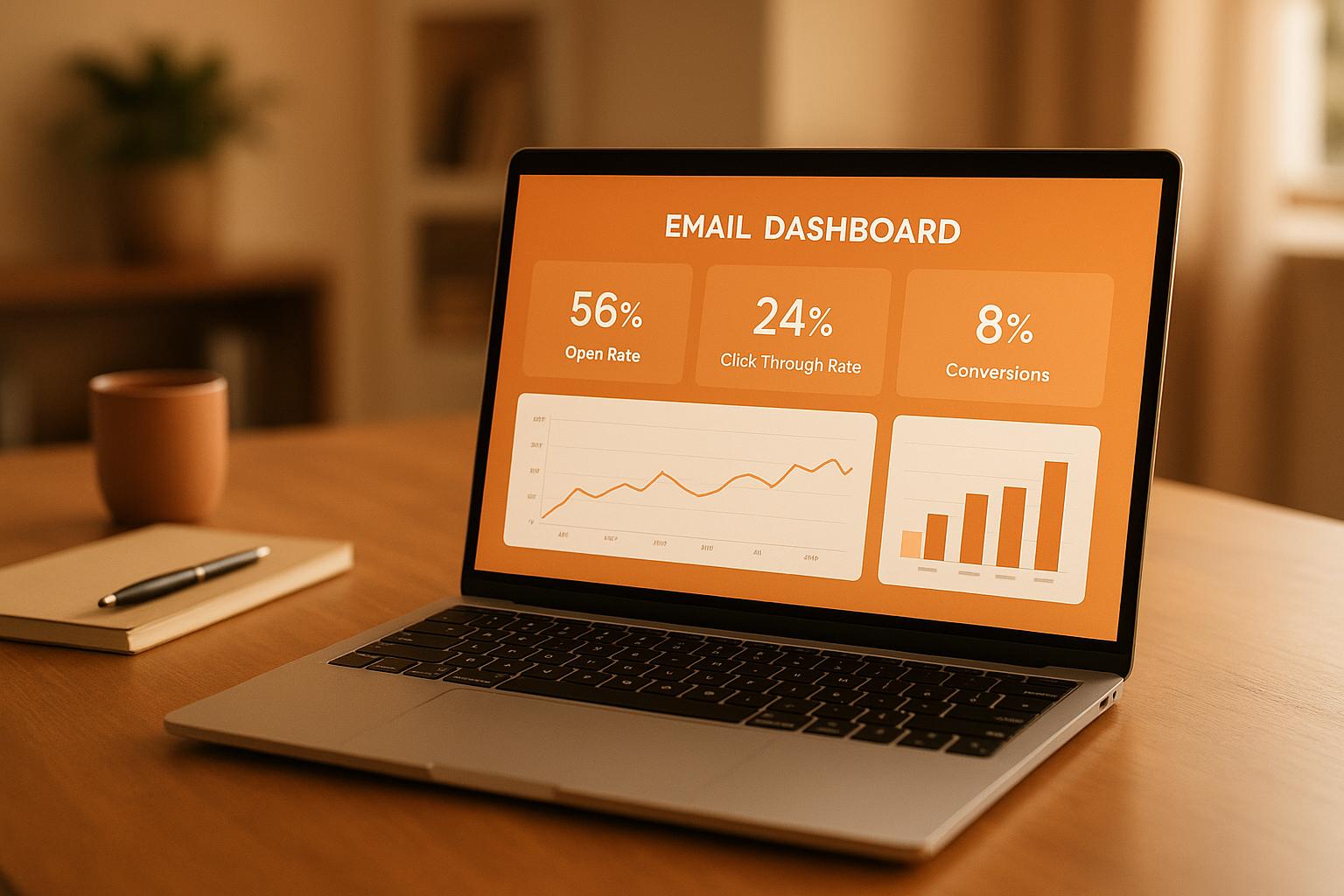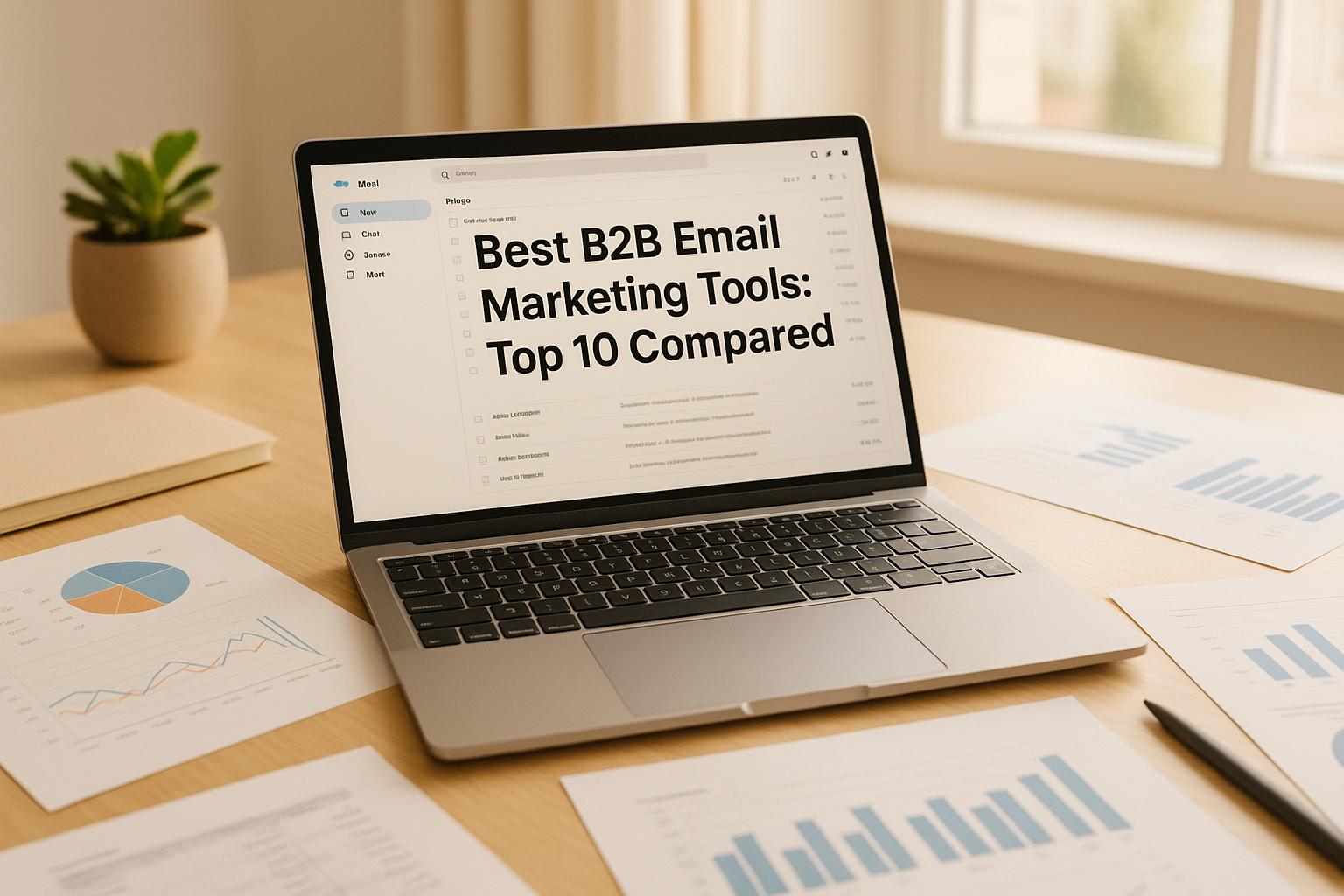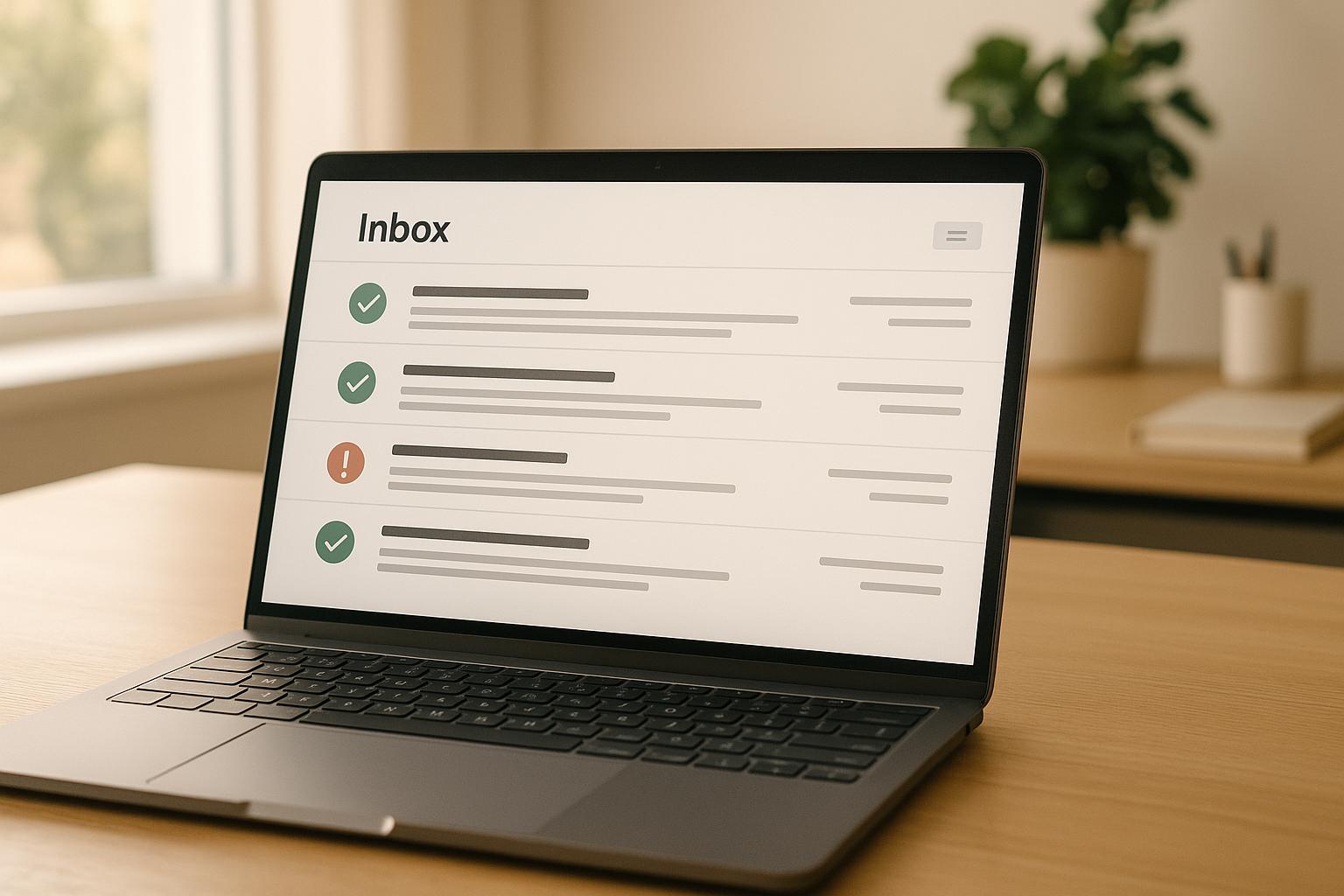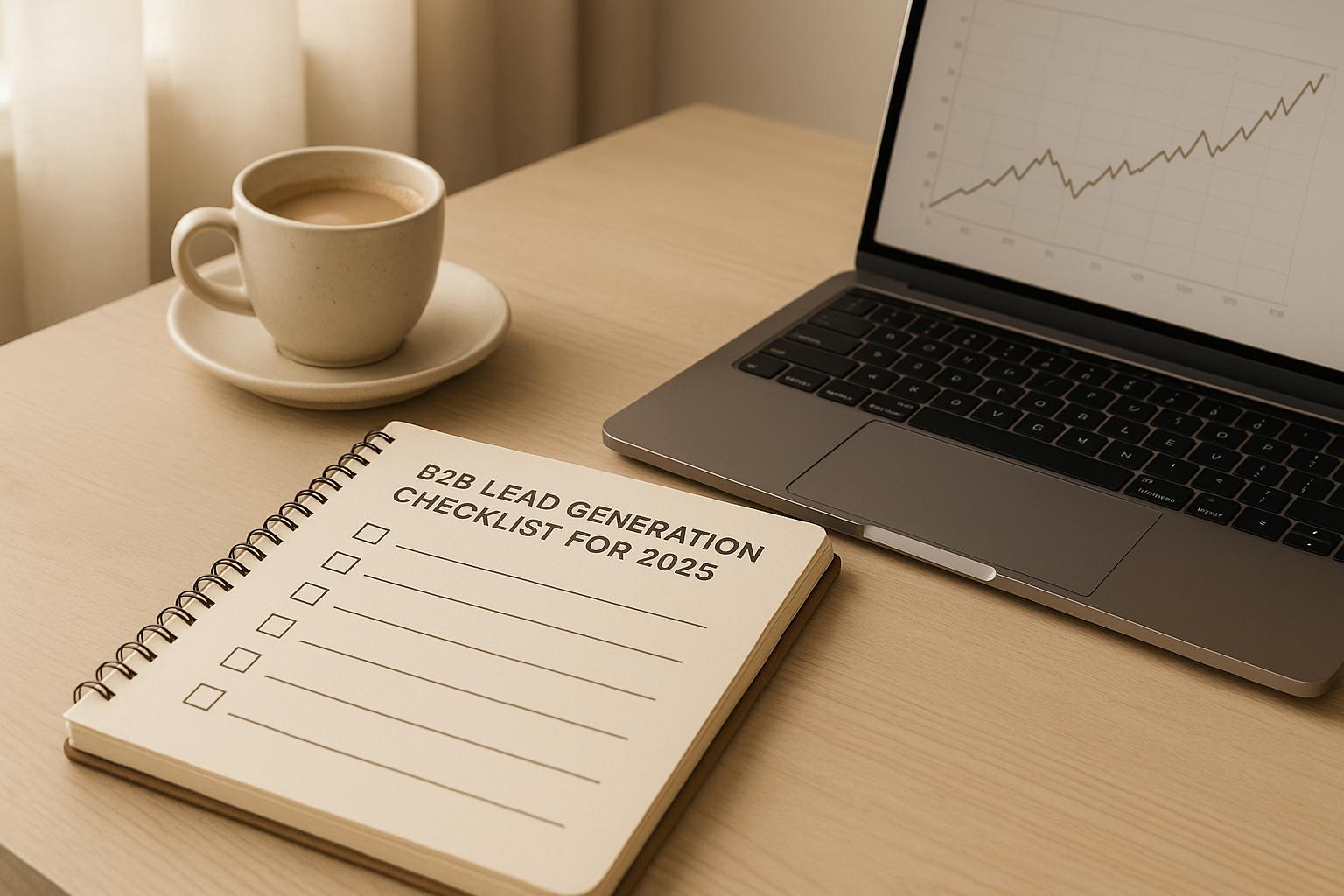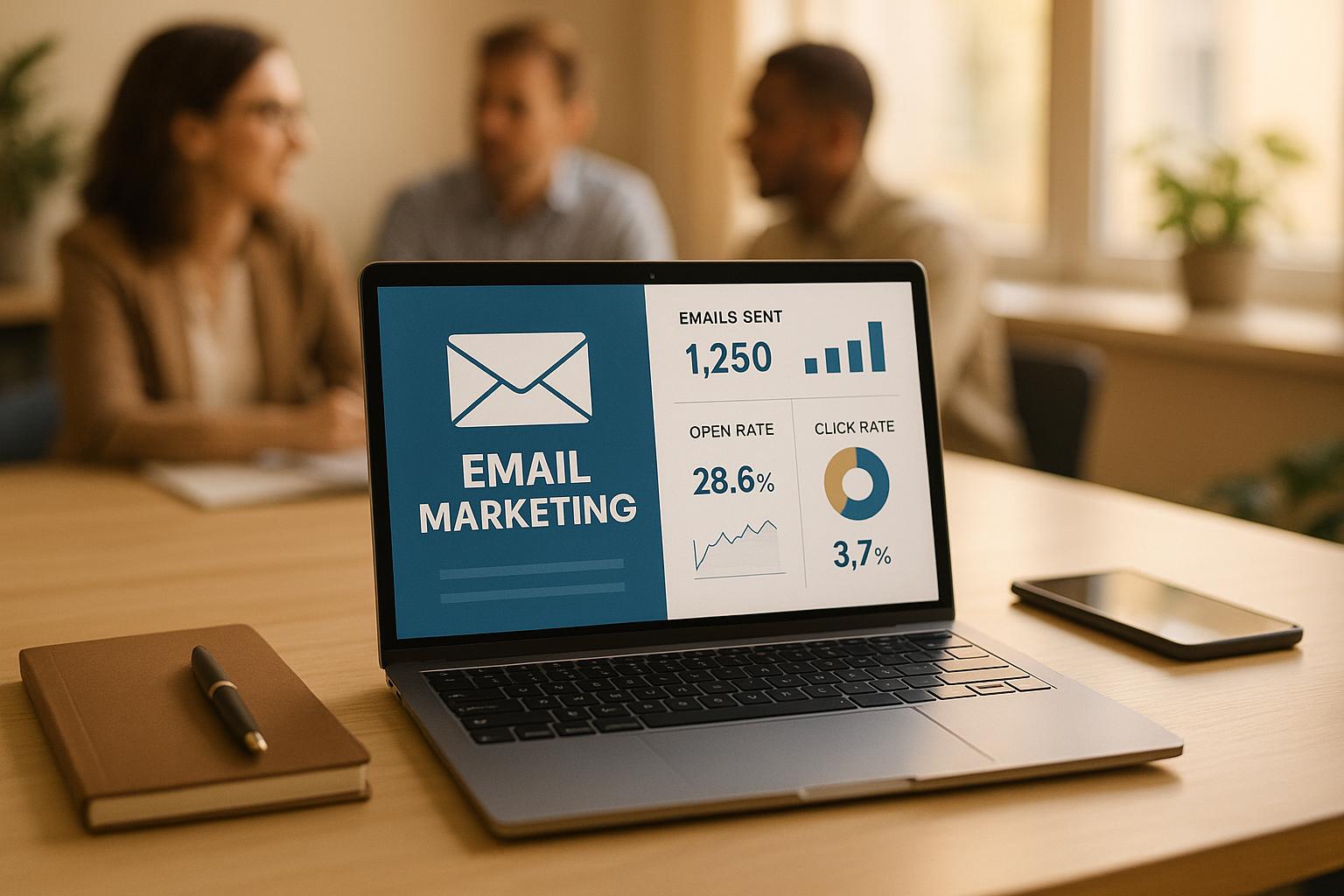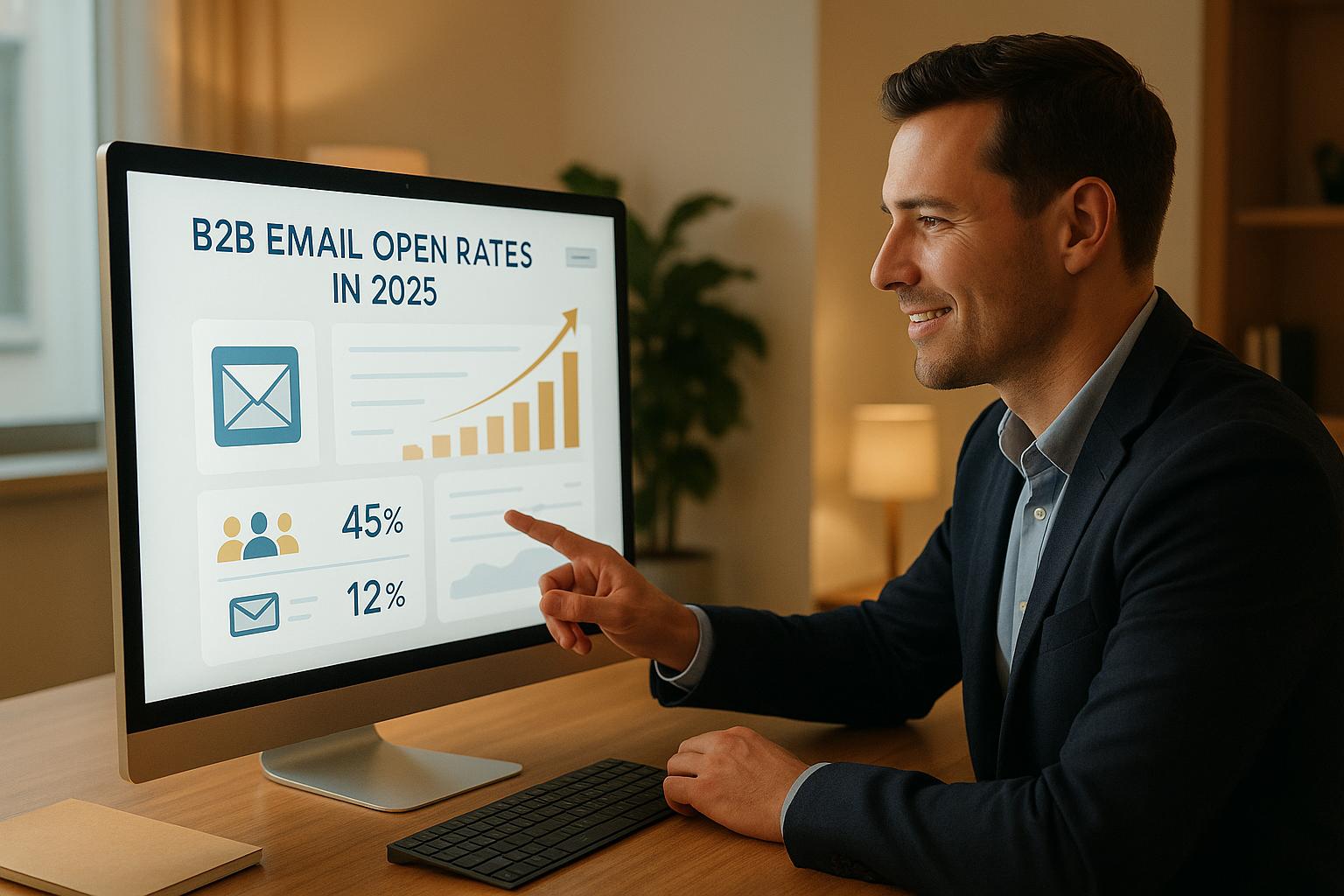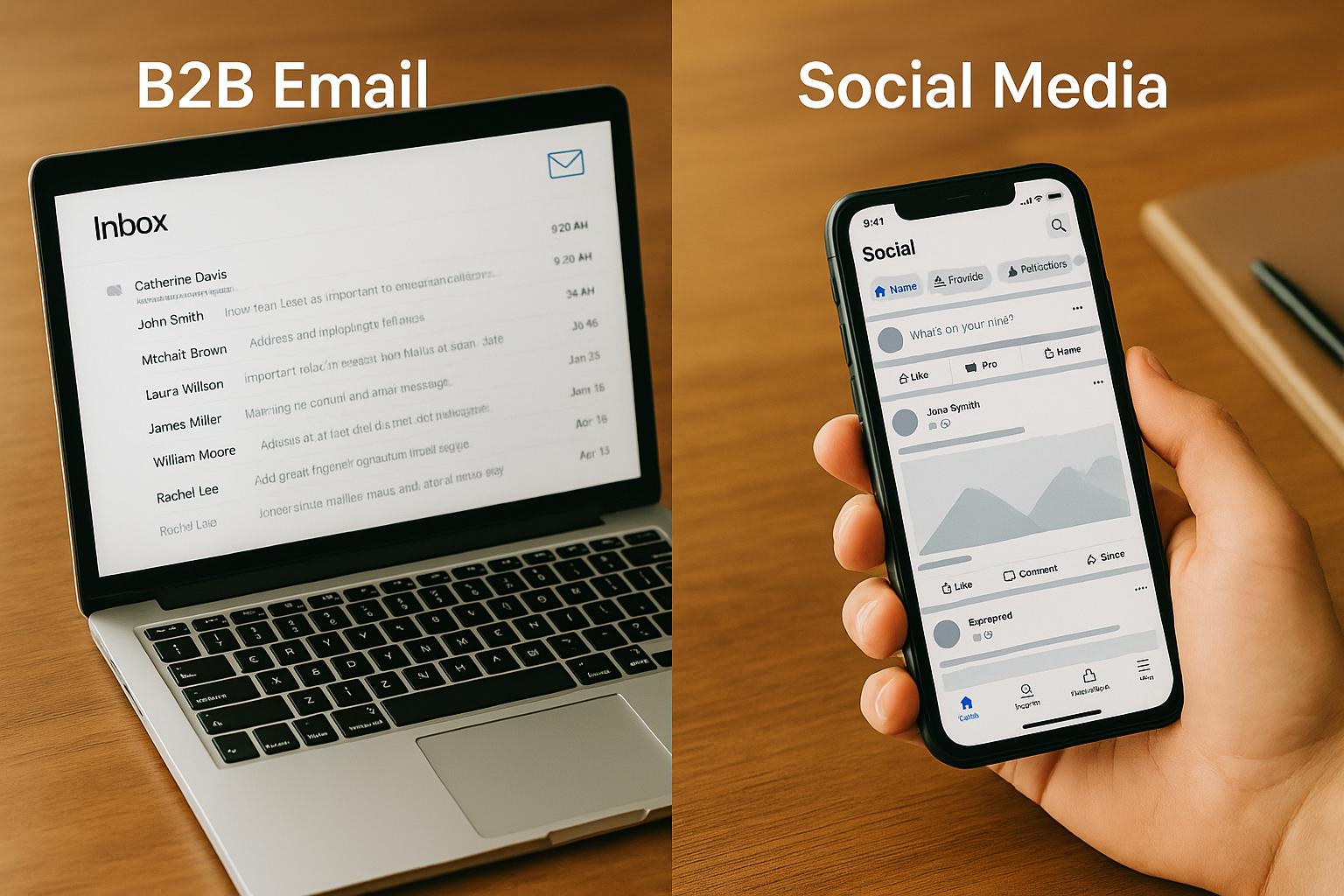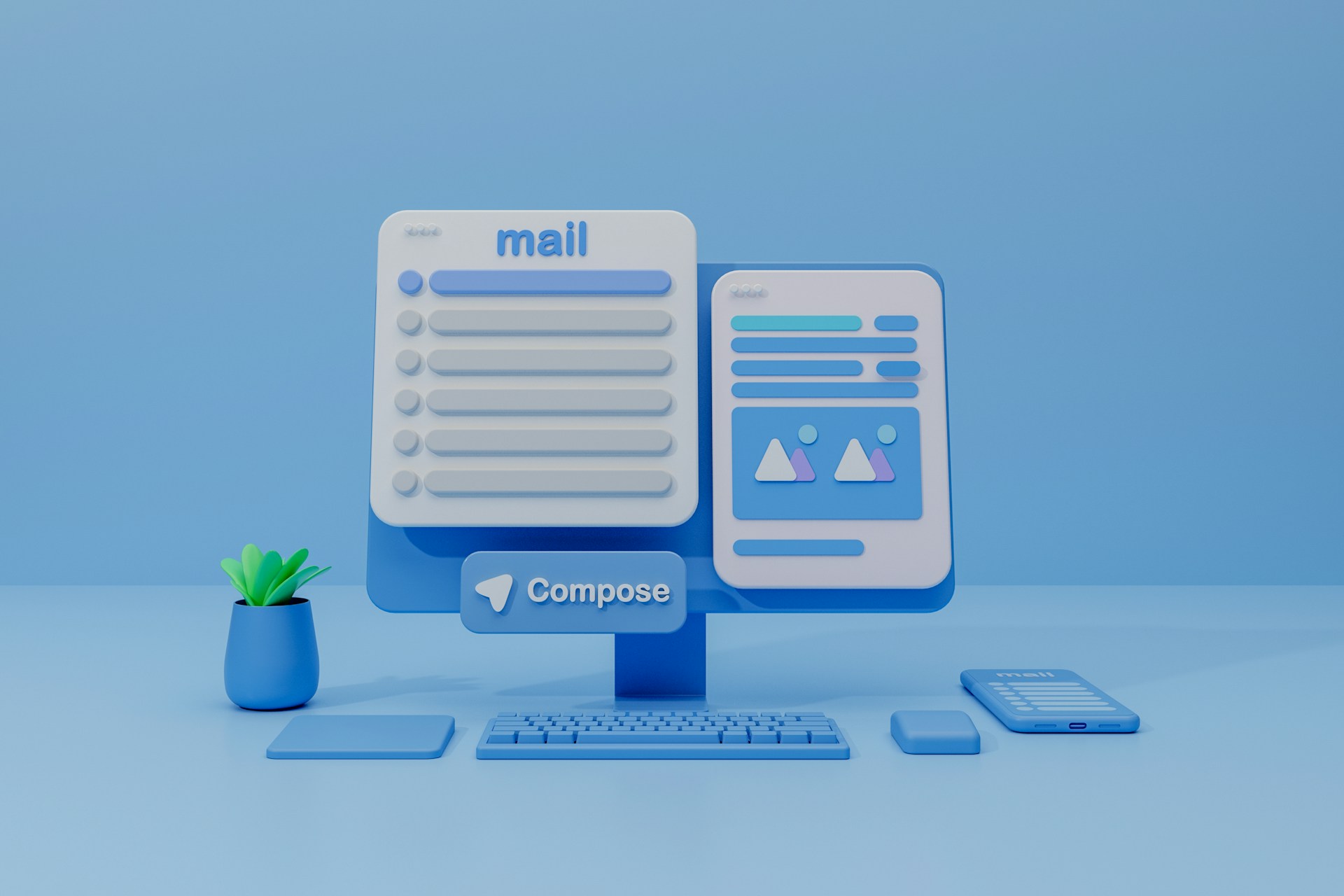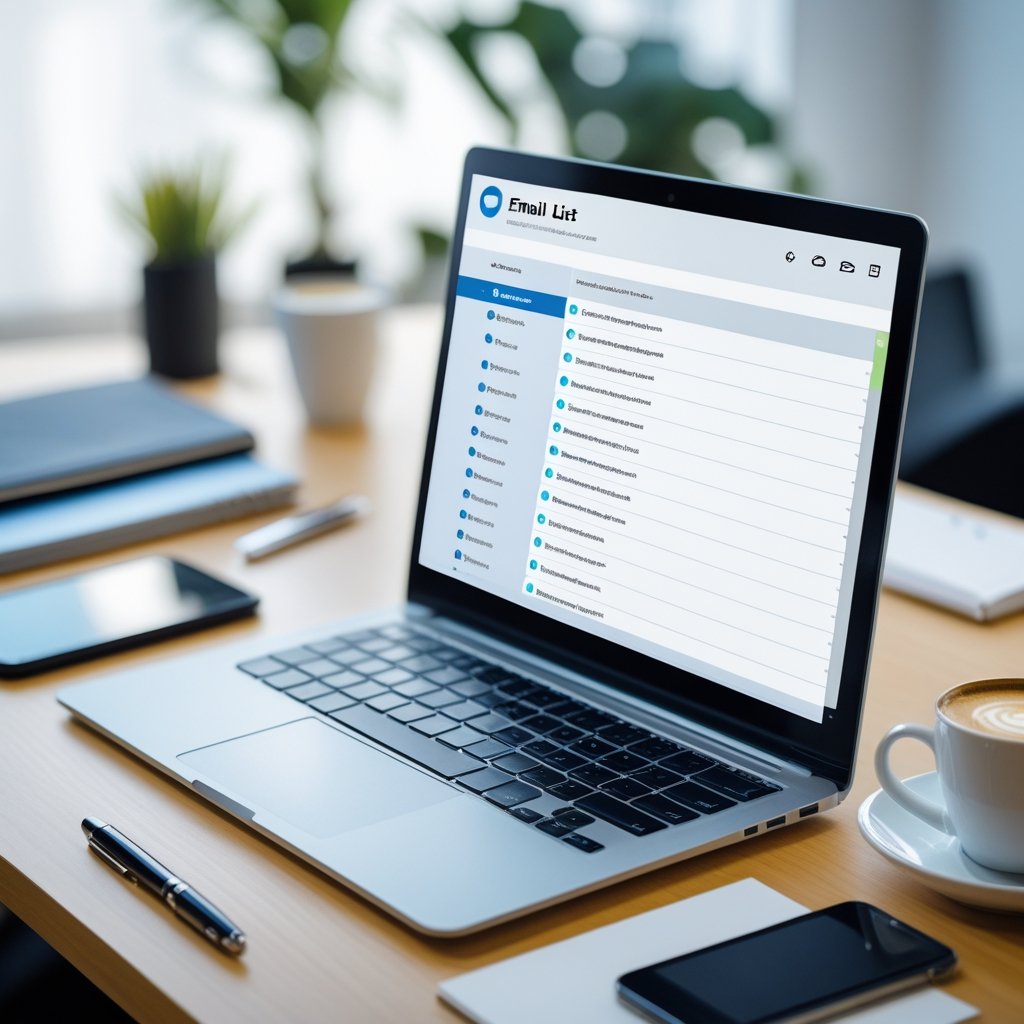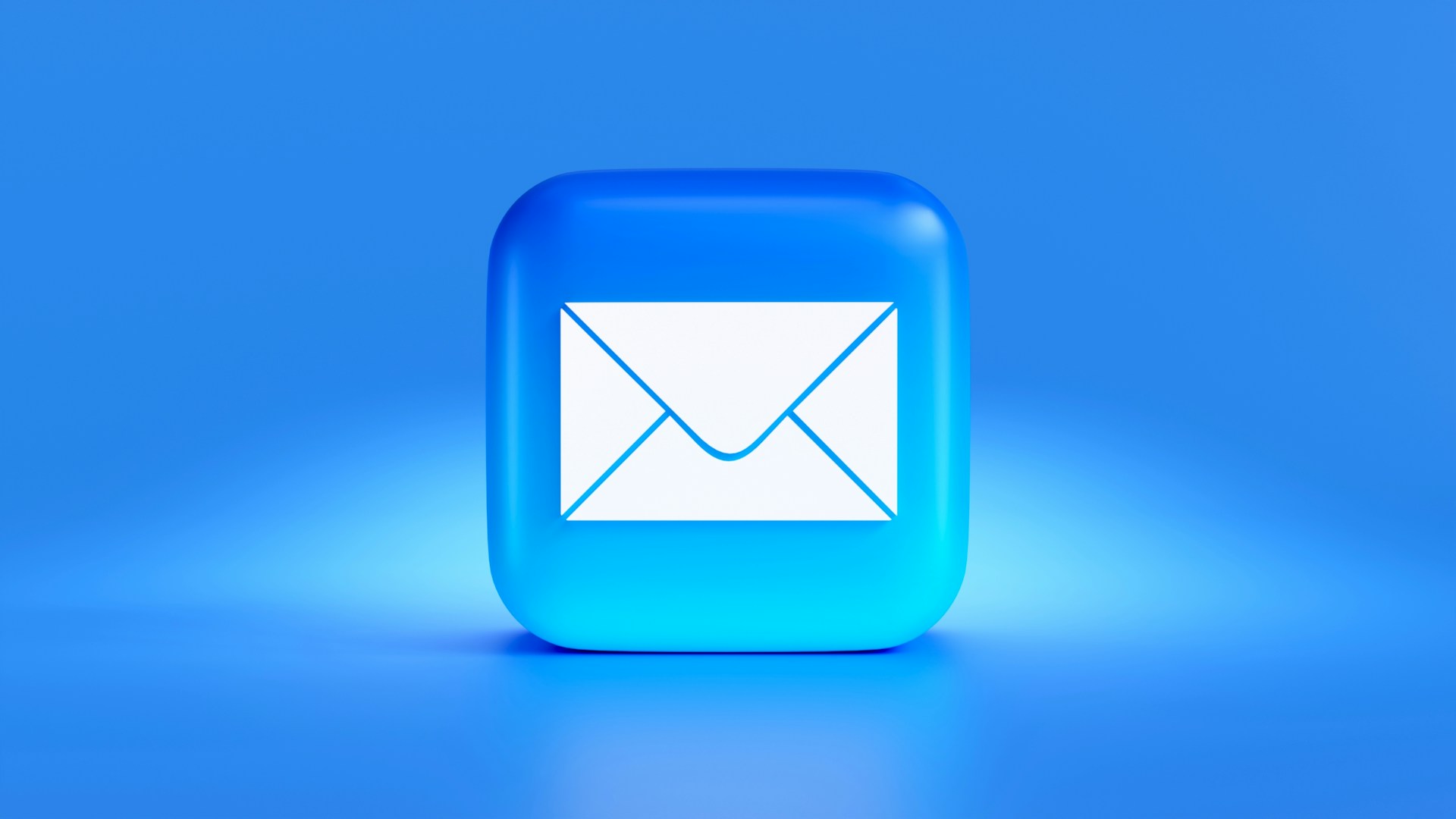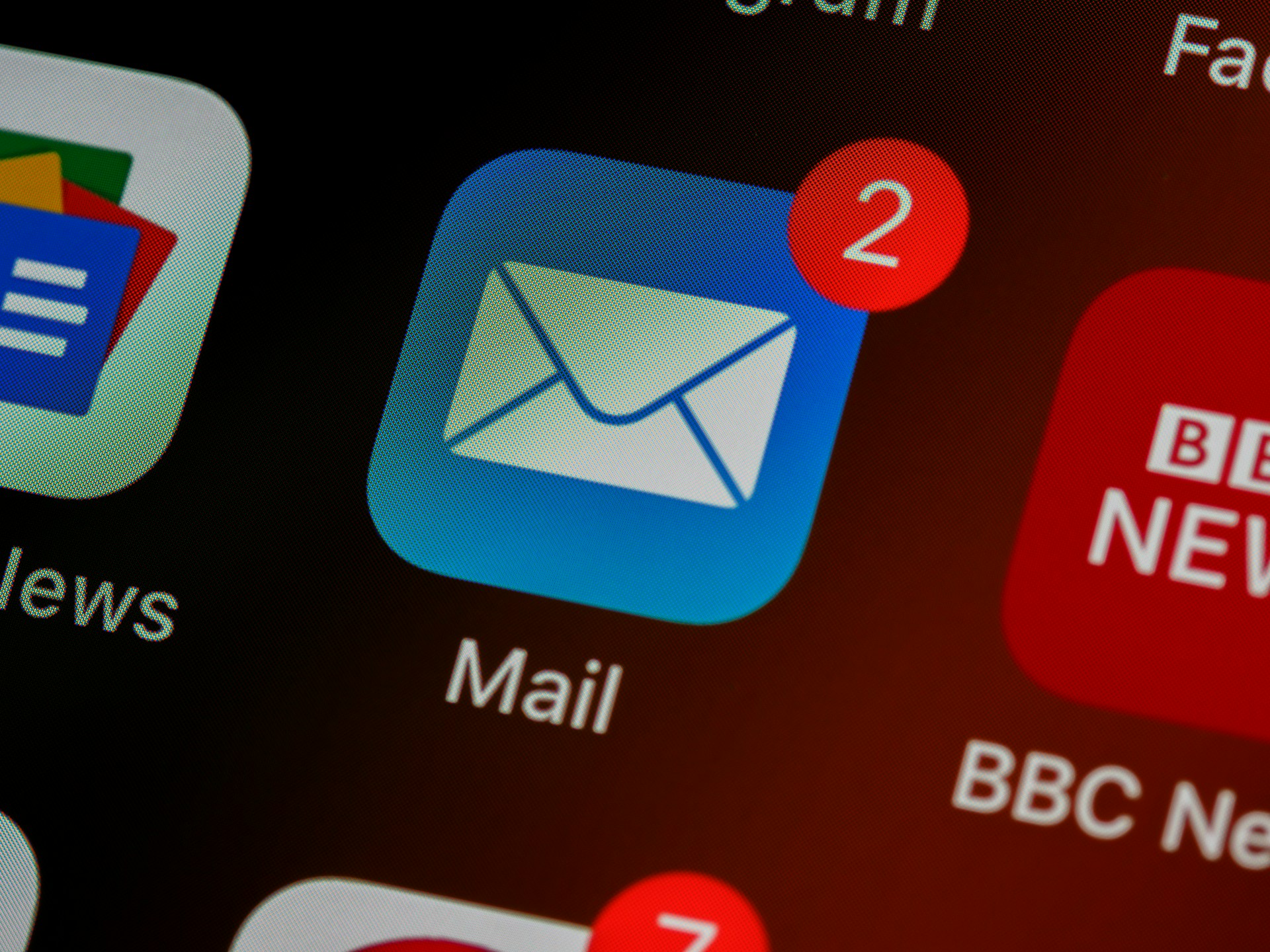How Analytics Improve Email Journey Flows

Want better email results? Start with analytics. They help you understand what works, what doesn’t, and where you’re losing engagement. With tools like real-time tracking, you can quickly adjust your strategy to improve performance.
Here’s what you’ll learn:
- Why analytics are critical for email success.
- Key metrics to track, like open rates and click-through rates.
- How real-time tools like Breaker simplify optimization.
- Steps to fix bottlenecks in your email flow.
- Using A/B testing, segmentation, and automation for better results.
Bottom line: Analytics turn guesswork into data-driven decisions, making every email more effective.
Key Metrics for Email Journey Optimization
Core Email Performance Metrics
To fine-tune your email journey, you need to focus on the right metrics. Key indicators like open rate, click-through rate (CTR), conversion rate, bounce rate, unsubscribe rate, and deliverability are essential. Each metric tells a story: open rate reflects how compelling your subject line and sender name are, while CTR measures how engaging your content and calls to action are. For instance, the average open rate for marketing emails stands at 36.5%, offering a helpful benchmark for comparison. Conversion rate, on the other hand, directly ties email performance to your broader business goals by showing how many recipients take the desired action. Tracking these metrics helps identify and address weak links in your email strategy.
How Real-Time Analytics Improve Insights
Real-time analytics give you a clearer picture of how your audience interacts with your emails. Tools like heatmaps and device usage analysis highlight areas for improvement, such as optimizing layouts for mobile and desktop. Monitoring link performance also helps you understand which content resonates most with your readers.
Platforms like Breaker make this process seamless. As Breaker puts it:
"Get instant visibility into open rates, click-throughs, subscriber growth, and more. No digging, no delays - just clean, actionable insights so you can optimize every send."
These tools allow you to quickly identify trends and address any issues, enabling you to adapt on the fly and improve engagement. With these insights, you’re better equipped to refine your email journey.
Finding Weak Points in Your Journey
Real-time data doesn’t just show you what’s working - it highlights what isn’t. By analyzing metrics across each step of your email sequence, you can pinpoint exactly where engagement drops off. For example, click maps can identify underperforming CTAs, prompting you to reposition them for better visibility and higher conversion rates. Tailoring content to specific audience segments based on these insights can also lead to stronger engagement and increased sales.
Certain patterns, like a high drop-off rate after a welcome email or a sudden spike in unsubscribes, indicate potential issues with your onboarding content or email frequency. When these red flags appear, consider adjusting email length, improving content structure, repositioning CTAs, or adding a personal touch to your messaging. Platforms like Breaker simplify this process by automatically identifying weak points and offering targeted recommendations. This eliminates the guesswork, allowing you to focus on implementing effective changes. The next section will explore strategies to address these challenges head-on.
How to Find and Fix Email Journey Bottlenecks
Mapping Your Customer Journey
Start by mapping out every email touchpoint from the moment someone subscribes to when they convert. This includes everything - welcome emails, nurture sequences, promotional campaigns, and re-engagement messages.
For each email, outline its specific goal. For instance, your welcome email might encourage users to complete their profiles, while a later nurture email might focus on getting them to book a demo. Document the timing between emails, the type of content you’re sending, and the desired outcome for each step.
Analytics are your best friend here. They’ll help you spot where your audience gets stuck. Maybe they’re opening emails but not clicking through, or clicking but not converting. Sometimes, they disengage entirely. A clear map of your email flow will highlight these decision points where people either move forward or drop off.
Pay close attention to progression rates between emails. For example, if 1,000 people receive your welcome email but only 300 open the next one, you’ve found a bottleneck that needs further investigation.
Once your journey is mapped out, the next step is digging into where engagement starts to slip.
Spotting Drop-Off and Engagement Problems
Analytics can pinpoint the exact moments when your audience loses interest. Watch for sharp declines in open rates, click-through rates, or conversion rates between emails. These drops often indicate issues like misaligned content, poor timing, or even technical glitches.
Tools like heatmaps and click maps can show you which parts of your emails grab attention and which parts don’t. For example, if your call-to-action (CTA) isn’t getting clicks, repositioning it based on this data could make a big difference.
Unsubscribe spikes are another red flag - they often mean your content isn’t resonating with your audience. Similarly, high bounce rates might point to deliverability problems or outdated email lists. Device-specific engagement data is also important. If mobile users consistently show lower engagement, it’s a sign your emails aren’t optimized for smaller screens.
Real-time analytics can make this process faster and more efficient. Instead of identifying issues weeks after an email goes out, you can catch engagement problems within hours and adjust your strategy for the next message.
These insights can also guide you toward more detailed data segmentation to uncover deeper trends.
Breaking Down Data for Better Insights
Once you’ve identified where drop-offs occur, segment your data to dig deeper. Different groups of subscribers behave differently, and understanding these patterns can help you fix bottlenecks more effectively.
Segmenting by device, demographics, and engagement history often reveals hidden performance gaps. For instance, if mobile users have lower conversion rates than desktop users, it might mean your email design or CTAs aren’t mobile-friendly. A quick design tweak could improve engagement across this group.
Engagement history segmentation is another powerful tool. By separating highly engaged subscribers from those losing interest, you can figure out whether your bottlenecks are affecting everyone or just specific groups. If loyal users are dropping off, it might be a content quality issue. If less-engaged users aren’t converting, your targeting might be off.
Analyzing the type of content you send can also provide valuable insights. Some audiences respond better to educational content, while others prefer product-focused messages. By breaking down performance by content type, you can see what works best at different stages of your email journey and adjust your strategy to match.
Methods for Ongoing Email Journey Improvement
A/B Testing and Personalization
A/B testing becomes far more effective when paired with analytics. By testing elements like subject lines, content variations, or call-to-action placements, you can rely on data - such as open rates, click-through rates, and conversions - to determine what resonates most with your audience. These metrics remove the guesswork, giving you clear insights into what works.
The trick? Test one element at a time. For instance, if you tweak both the subject line and email content in the same test, you won’t know which change actually made the impact. Start with high-impact elements like subject lines, where even small tweaks can lead to noticeable improvements.
Personalization takes this a step further by tailoring messages to specific audience segments. Instead of relying on assumptions, use analytics to segment your audience based on real behaviors - like browsing history, past purchases, or engagement with previous emails. For example, new subscribers might need introductory content, while long-time customers may respond better to loyalty rewards. Similarly, someone who downloaded a whitepaper may require entirely different messaging than someone who attended a webinar. Analytics reveal these nuances, allowing you to craft emails that feel personal and relevant.
Platforms like Breaker make this process faster and simpler by providing real-time data on open rates, click-throughs, and subscriber growth. This instant feedback lets you quickly adjust and implement successful variations in future campaigns.
Once you’ve fine-tuned your content, automation and AI can take your email strategy to the next level.
Automation and AI-Driven Recommendations
Automation powered by analytics helps streamline repetitive tasks in email optimization. For example, Send-Time Optimization models can analyze up to 16 weeks of historical data to determine the best time to send emails to each subscriber. These systems even allocate 5% of sends to test alternate times, while the remaining 95% are sent at the optimal moments to maximize engagement.
AI tools also bring a new level of precision to content recommendations. By analyzing large datasets, these tools can identify trends, flag underperforming email segments, and suggest strategies to re-engage inactive subscribers. This kind of insight would take hours - if not days - to uncover manually.
Breaker’s automation tools are particularly effective at targeting ideal customer profiles (ICPs) using AI-driven algorithms. This means your email campaigns start with highly engaged subscribers, increasing the likelihood of conversions right from the start. The platform also takes care of deliverability by automating tasks like mail stream management, list hygiene, and reputation monitoring. This ensures your emails land in inboxes instead of being flagged as spam.
While automation handles routine tasks, the strategic decisions remain in your hands. Use AI to identify the best send times and flag issues, but rely on your expertise to create compelling content and design customer experiences that truly connect.
Step-by-Step Process for Ongoing Improvements
With testing, personalization, and automation in place, you can follow a structured approach to keep improving your email campaigns.
First, establish baseline metrics for each email in your sequence. Track key performance indicators like open rates, click-throughs, conversions, and unsubscribe rates to understand how your emails are currently performing.
Regularly review this data to identify trends or anomalies. For instance, a sudden drop in engagement might signal a content issue, while a gradual decline could point to audience fatigue. Pay attention to patterns across audience segments - if mobile users consistently show lower engagement, for example, your email design might need adjustments.
When implementing changes, do so systematically. Test one variable, like a new subject line, over a set period. Analyze the results before moving on to other elements, such as content or call-to-action placement. This method makes it easier to pinpoint what’s driving improvements.
Take Contoso as an example. They boosted conversions by repositioning underperforming call-to-action buttons based on insights from click maps.
Finally, document what works. Keeping a record of successful tactics helps you refine and evolve your email strategy over time. Platforms offering clear, actionable insights make this process even smoother, ensuring every email you send is better than the last.
sbb-itb-8889418
Using Breaker's Analytics for Better Email Journeys
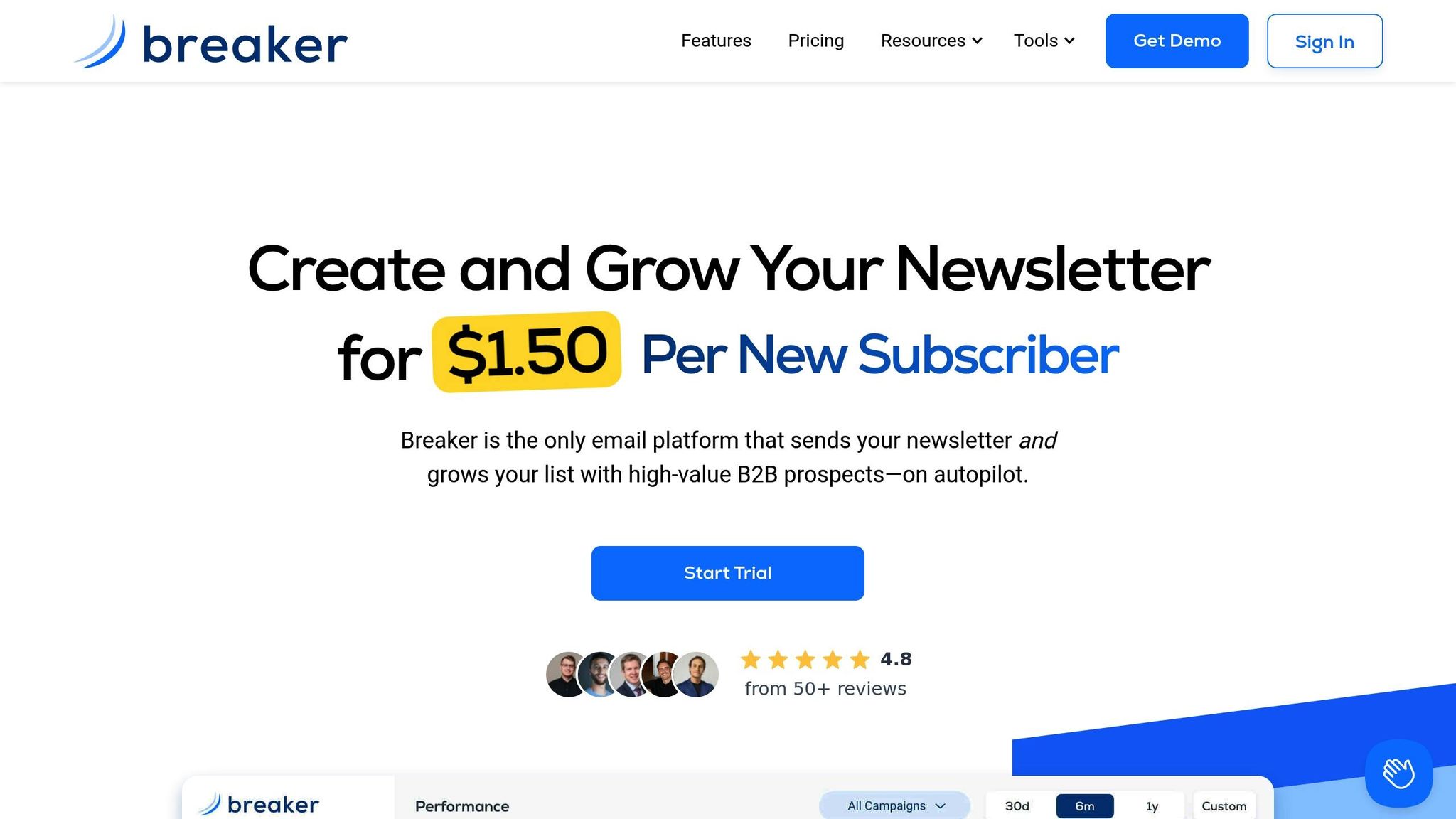
Breaker's Analytics Features
Breaker’s analytics platform provides real-time insights into how your email campaigns are performing, offering a level of precision that goes beyond traditional batch reporting tools. With features like live tracking of open rates, click-through rates, and conversions, you can make adjustments on the fly if engagement starts to dip during a campaign.
One standout feature is Breaker’s ability to target audiences with pinpoint accuracy. By analyzing behavioral data, firmographics, and engagement history, Breaker automatically segments your audience. This means new leads receive introductory content tailored to their interests, while loyal customers are sent personalized offers that align with their preferences. This targeted approach ensures that every recipient gets the right message at the right time, keeping your email journeys relevant and effective.
Another game-changer? Automated lead generation. Breaker integrates seamlessly with CRM platforms and other data sources, constantly adding fresh, high-quality leads to your campaigns. These new subscribers are placed into the appropriate stage of your email sequence, guaranteeing that your campaigns remain dynamic and impactful. This combination of real-time analytics and automation ensures your email journeys stay optimized from start to finish.
Tracking Engagement and Deliverability
Breaker’s dashboard simplifies complex email data into easy-to-read visuals, helping you quickly identify which emails are hitting the mark and which ones need tweaking. Key metrics like open rates, click-through rates, and bounce rates are broken down by audience segments, offering valuable insights. For instance, Breaker reports an impressive average open rate of 60% and a 40% click-through rate across active campaigns.
Deliverability is another area where Breaker excels. The platform provides real-time alerts for issues like spam triggers or list hygiene problems, allowing you to address them immediately. With unlimited email validations, Breaker ensures your email lists stay clean and your campaigns maintain strong performance over time.
Breaker vs Manual Analysis Comparison
Here’s how Breaker’s analytics stack up against manual analysis:
| Feature/Benefit | Breaker Analytics | Manual Analysis |
|---|---|---|
| Data Refresh Rate | Real-time | Delayed (batch/manual) |
| Audience Segmentation | Automated, dynamic | Manual, static |
| Lead Generation | Automated | Manual or external tools |
| Engagement Visualization | Interactive dashboards | Spreadsheets/reports |
| Deliverability Monitoring | Real-time alerts | Periodic checks |
| Time to Insight | Instant | Hours to days |
| Actionability | Immediate adjustments | Slow, reactive |
Manual analysis often involves pulling data from multiple systems, creating custom reports in spreadsheets, and waiting for trends to emerge. By the time you identify an issue, you may already have lost valuable conversions or damaged your sender reputation.
Breaker eliminates these delays with instant, actionable insights. If a specific email segment starts underperforming, you can dive into the data, analyze recipient behaviors, and implement changes right away. This speed is especially critical for time-sensitive campaigns, where every moment counts.
Conclusion: Analytics Drive Email Journey Success
Key Takeaways
Analytics turn email optimization into a precise, data-focused process. With real-time performance tracking, marketers can quickly spot issues, make adjustments, and maximize ROI across the customer journey. Tools like Breaker provide instant access to essential metrics like open rates, click-throughs, and subscriber growth, giving marketers the insights they need to refine their strategies.
Top-performing B2B marketers prioritize improving customer lifetime value over simply tracking engagement metrics. By aligning journey optimization with long-term revenue goals, they can pinpoint which touchpoints lead to higher conversions and better retention. Platforms like Breaker simplify this process by combining automated lead generation, targeted audience insights, and real-time analytics into a single system, eliminating the hassle of juggling multiple tools.
Personalization at scale stands out as a key driver of success. Analytics allow marketers to tailor experiences based on user behavior, while AI-powered tools fine-tune campaigns automatically, achieving results that manual efforts simply can't match. This approach paves the way for meaningful, actionable improvements.
Next Steps for Marketers
To harness the power of real-time analytics, start by identifying your most impactful use cases - those critical questions that could lead to significant revenue gains. Map your customer journey and use analytics to systematically measure and optimize each stage. Pay special attention to the decision and retention phases, where improvements often yield the greatest results.
Choose platforms that integrate analytics directly into your campaign workflow. Breaker’s combination of precise targeting and real-time analytics is a great example, delivering outcomes like a 67% average open rate and 48% average click-through rate across active campaigns. Peter Lohmann, CEO of RL Property Management, shared his experience:
"We tripled our sponsor revenue and doubled our community memberships with Breaker. Over a 10X ROI".
The secret to success is continuous improvement based on real user behavior. Testing and refining your strategy over time is essential. Customer journey maps won’t be perfect right away - they require ongoing adjustments to enhance the experience. By using analytics to track conversion rate gains and lower customer acquisition costs, you’ll create email journeys that drive sustainable growth and deliver measurable results. These insights ensure your email campaigns make a lasting impact, from the first interaction to long-term engagement.
From Data to Dollars: Analyzing Your Email Marketing Metrics for Growth!
FAQs
How can real-time analytics help improve my email marketing campaigns?
Real-time analytics offer instant visibility into essential metrics like open rates, click-through rates, and subscriber growth. By keeping an eye on this data as it unfolds, you can quickly spot trends, identify successes, and make timely adjustments to improve your campaign's results.
This quick feedback loop lets you refine elements like subject lines, email content, and send times to better connect with your audience. The result? Higher deliverability and improved conversion rates. Using these insights helps ensure your email campaigns run smoothly and resonate with your subscribers.
What are common issues in email journey flows, and how can analytics help fix them?
Email journey flows often hit roadblocks, like low open rates, high unsubscribe rates, or users dropping off at certain points. These problems usually arise from things like sending emails at the wrong time, offering content that doesn’t resonate, or having calls to action that lack clarity.
By leveraging analytics tools, you can pinpoint where these issues occur. Tracking metrics such as open rates, click-through rates, and conversion rates provides valuable insights. For instance, real-time performance data can highlight the exact moments where users lose interest, giving you the chance to tweak email timing, improve content relevance, or experiment with fresh strategies to keep users engaged and improve the overall flow.
How can analytics-driven personalization and segmentation boost email engagement and conversions?
Using analytics to power personalization and segmentation can transform how your audience interacts with your emails. By diving into audience data, you can craft content that speaks directly to specific groups, making your messages feel more relevant and engaging.
This approach isn’t just about numbers - it’s about understanding what truly matters to your audience. The result? Higher open rates, more clicks, and deeper engagement. For B2B marketers, tools like real-time performance tracking and advanced audience targeting ensure your emails land in the right inbox at the perfect moment, driving maximum results.



